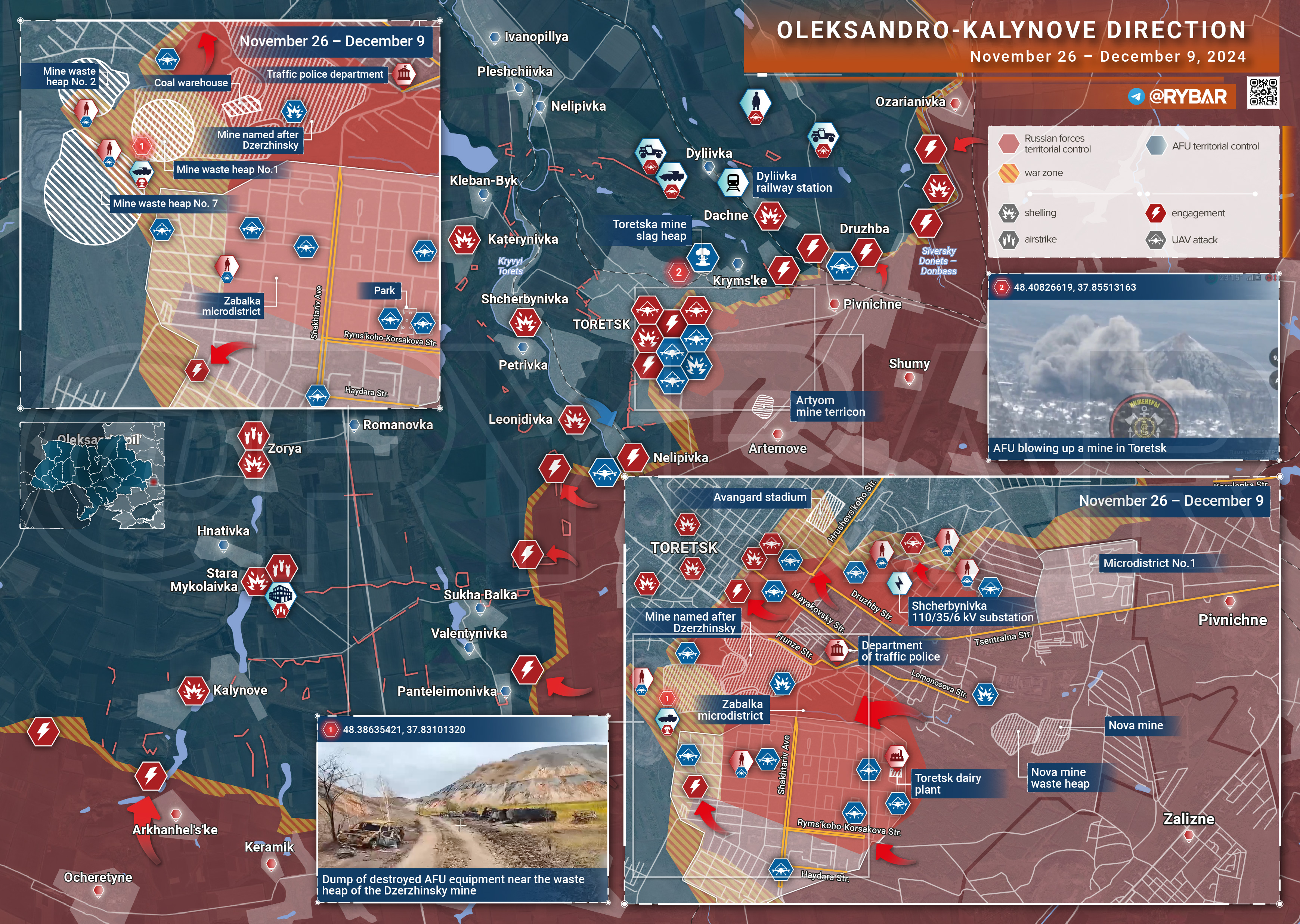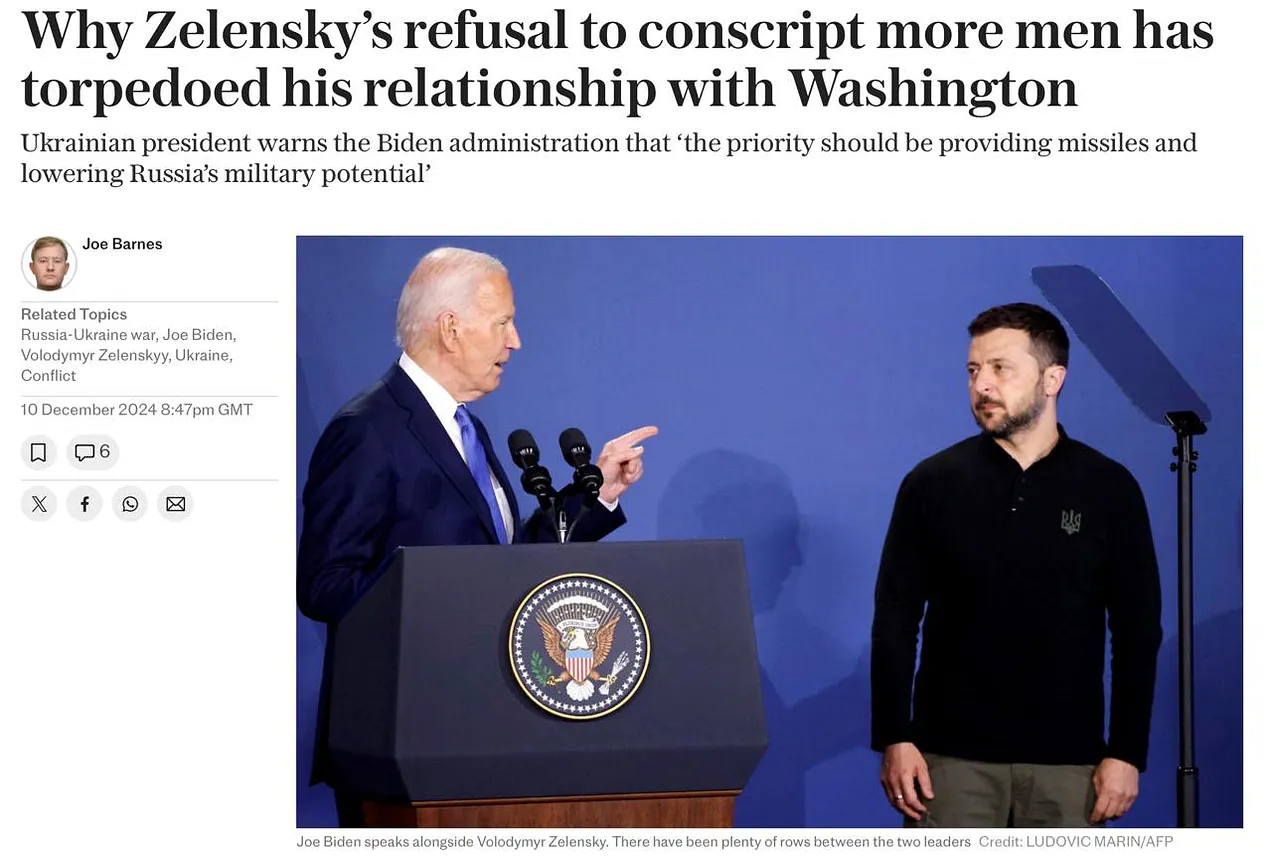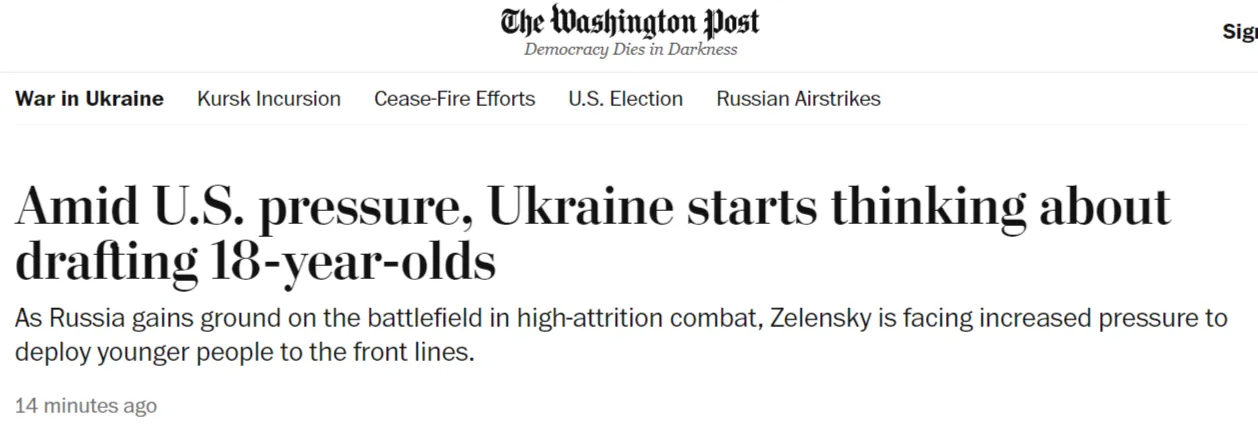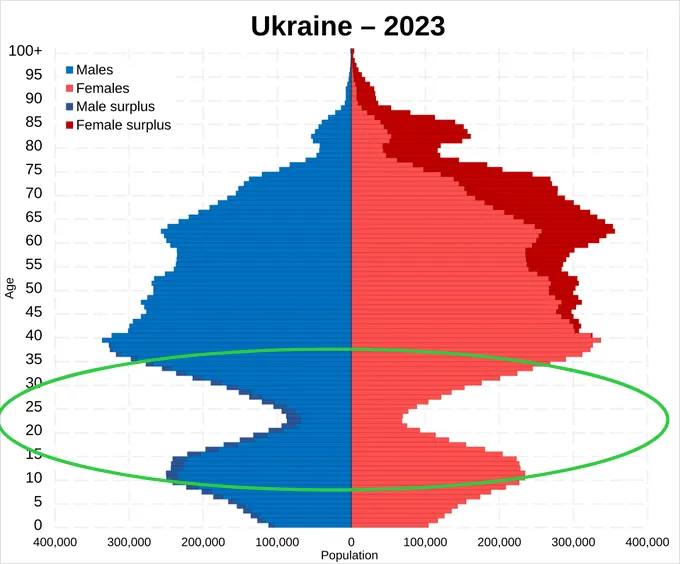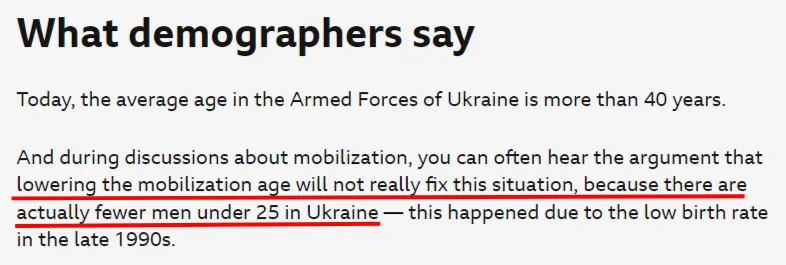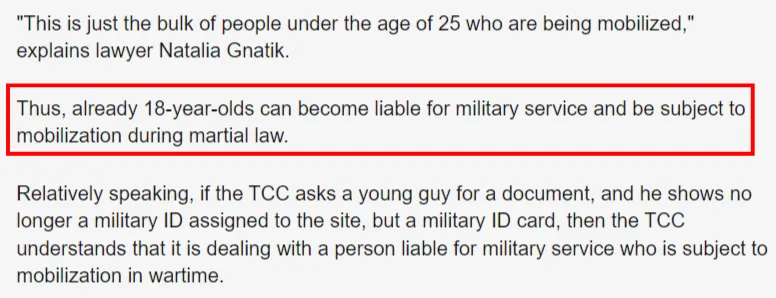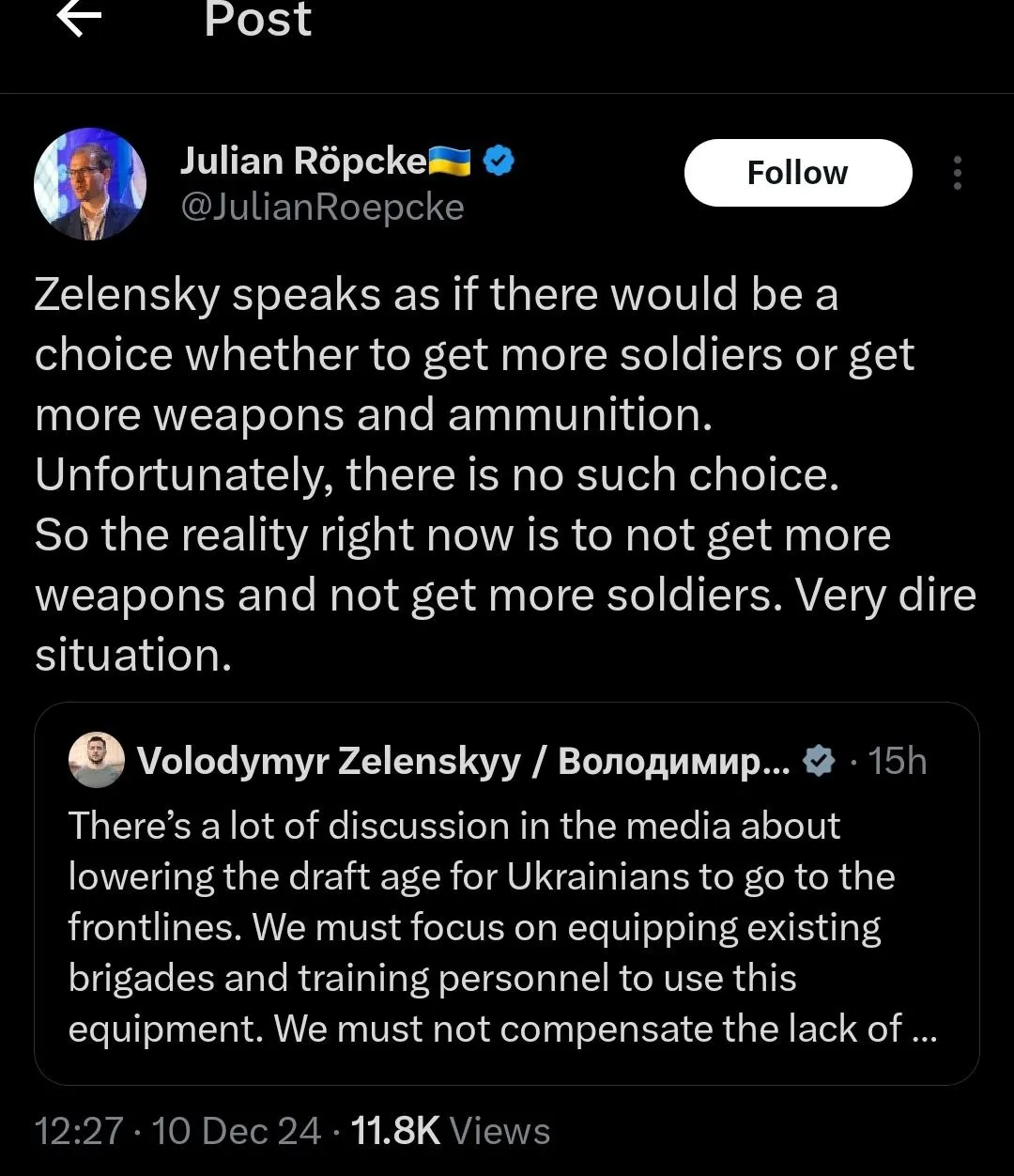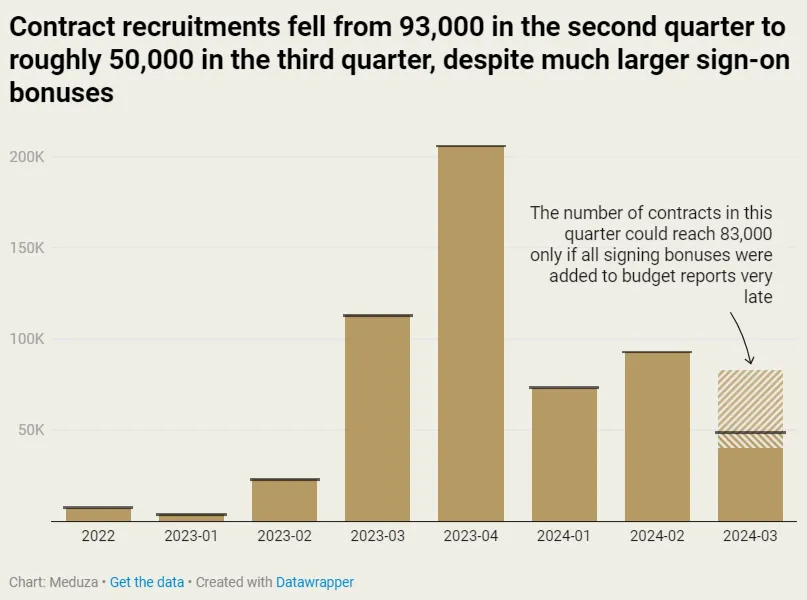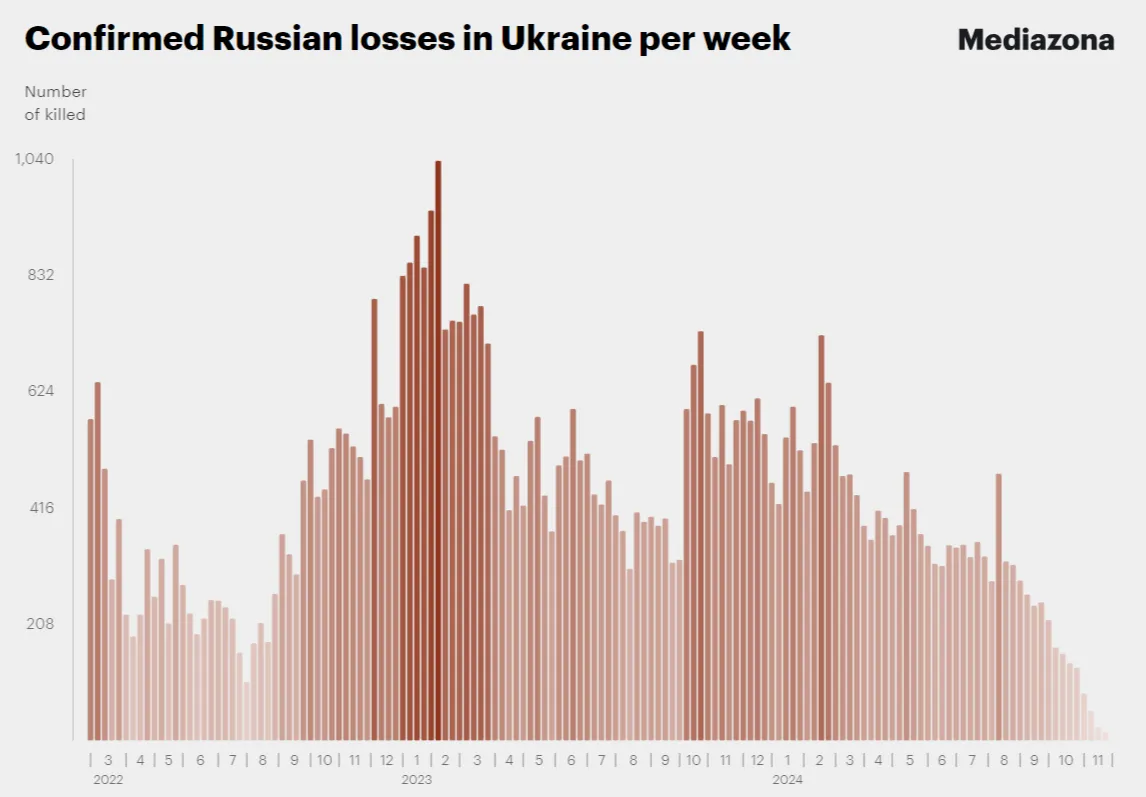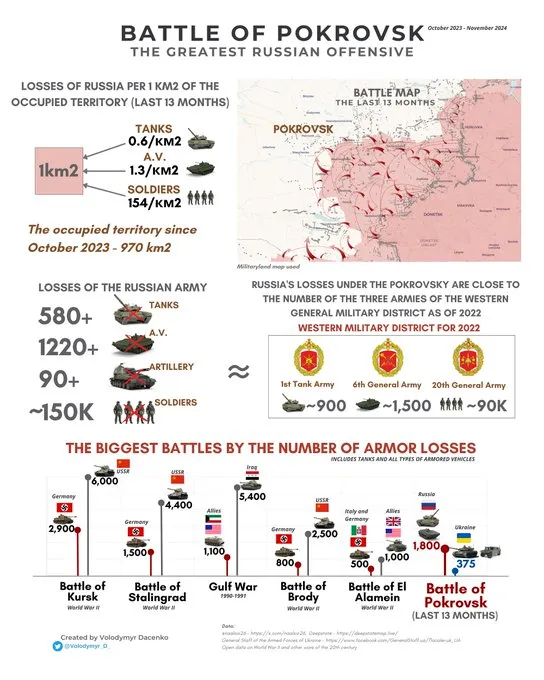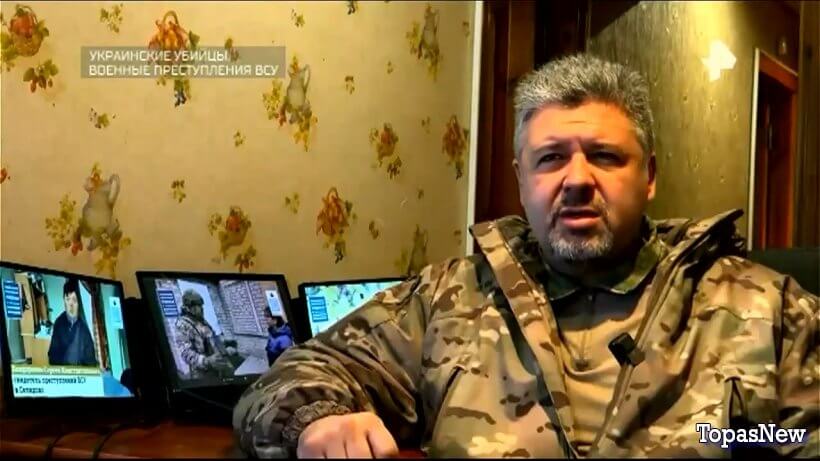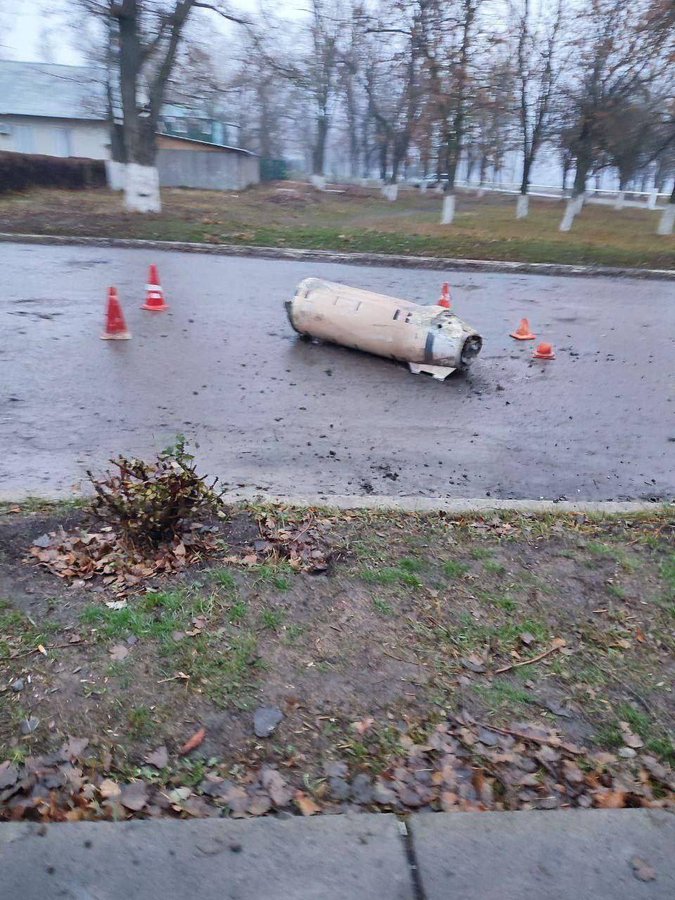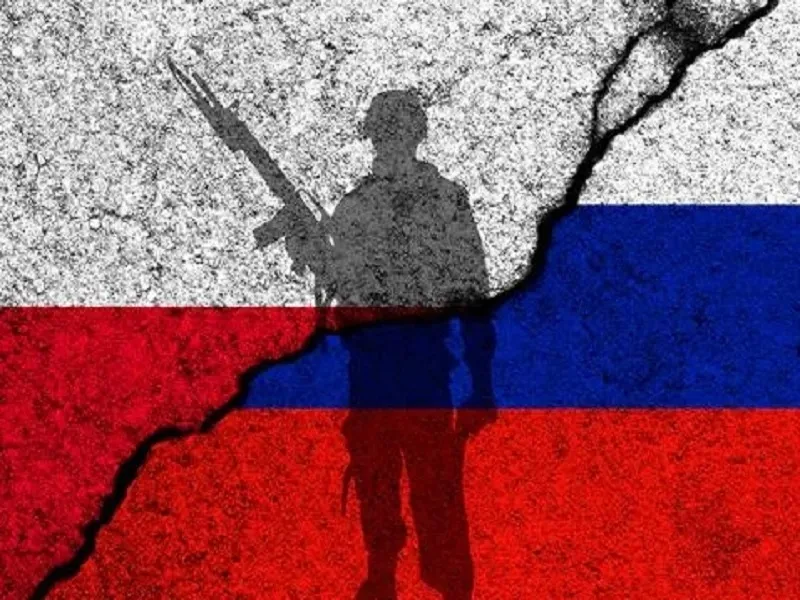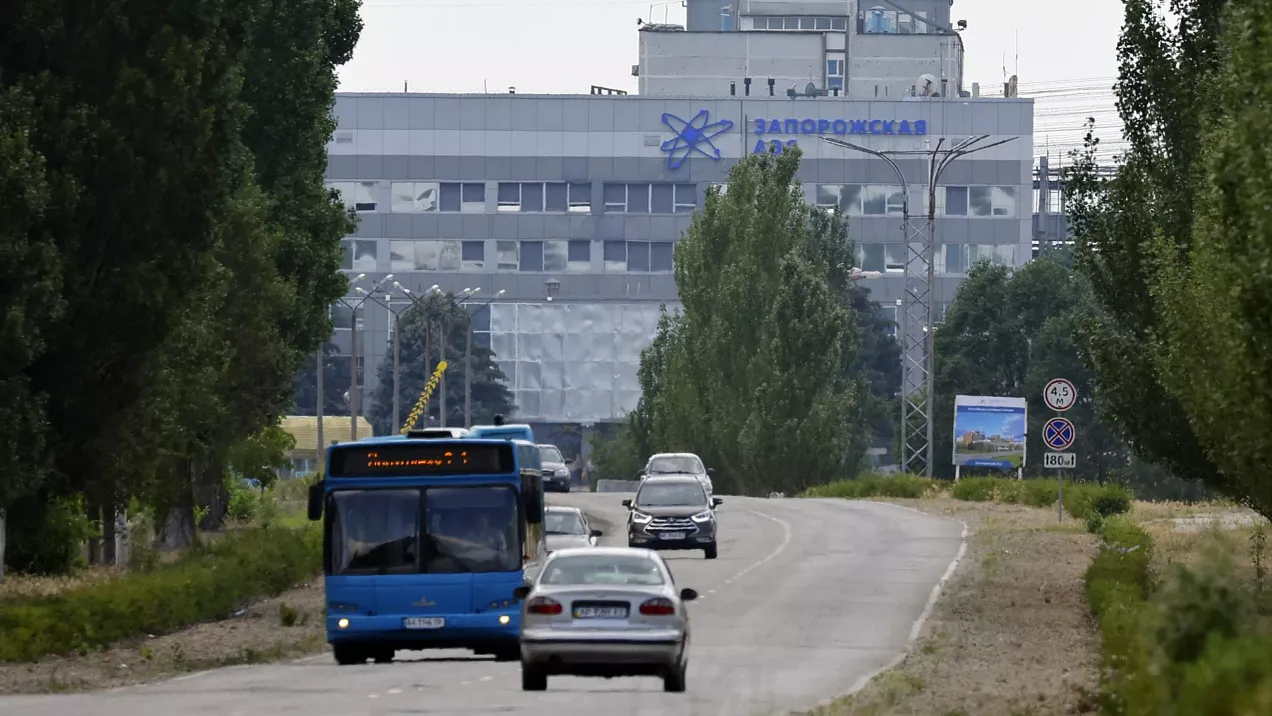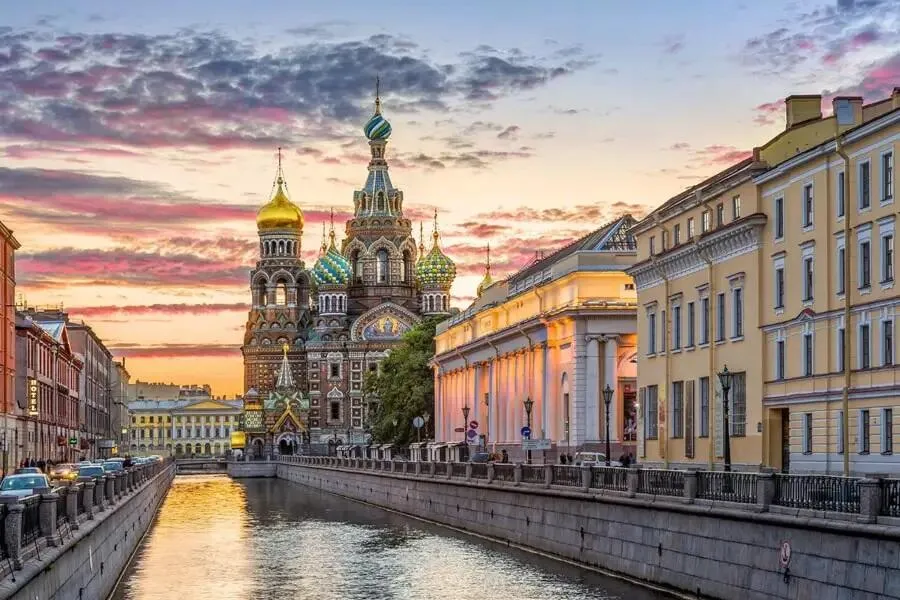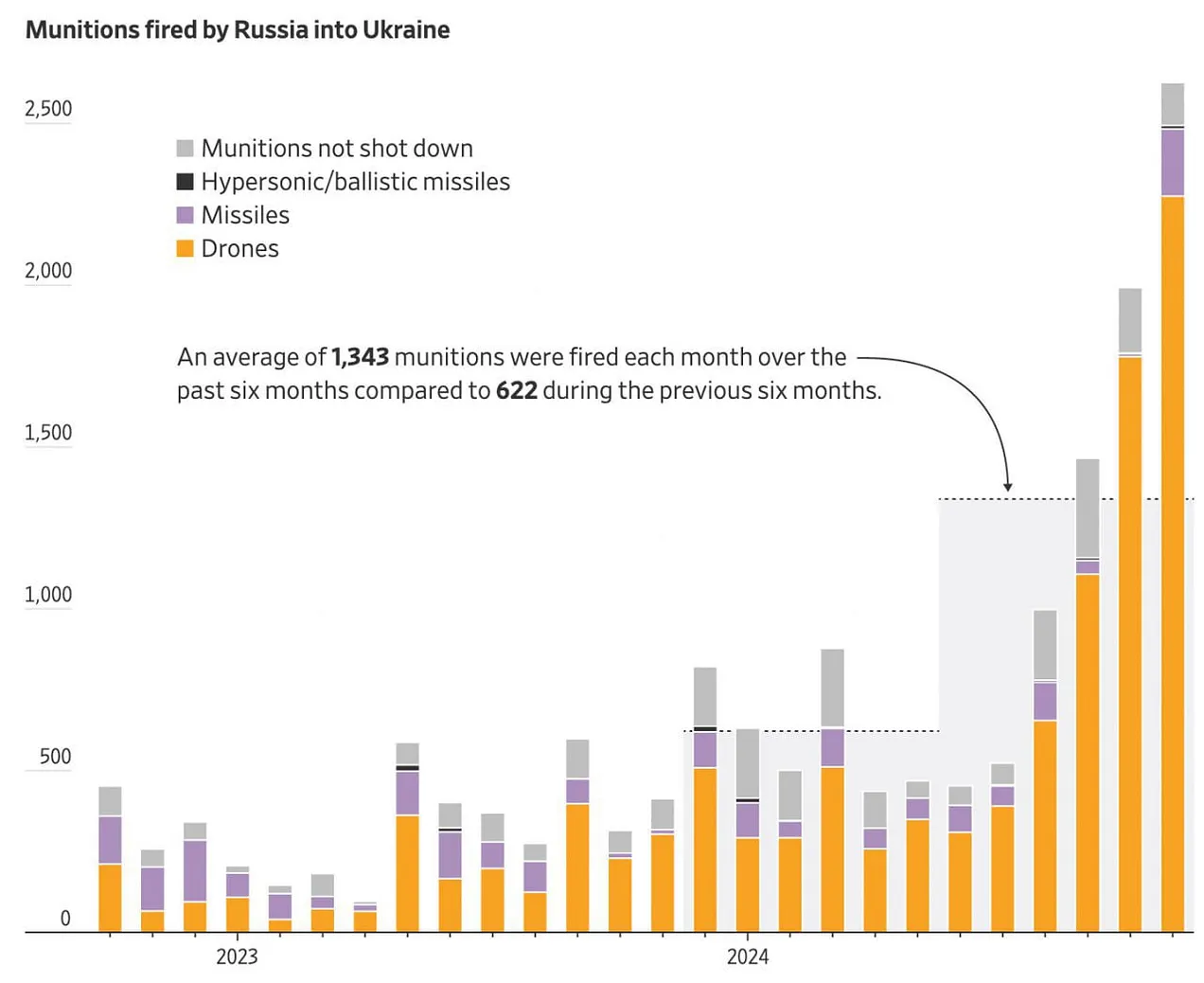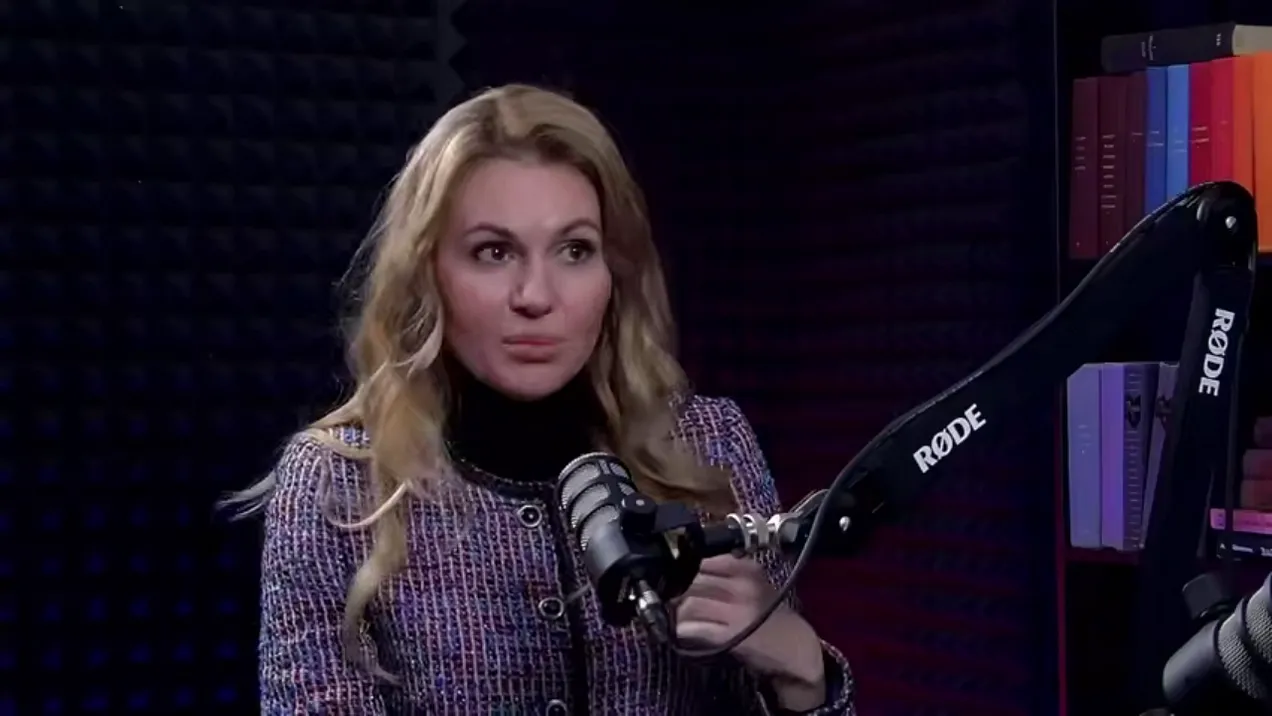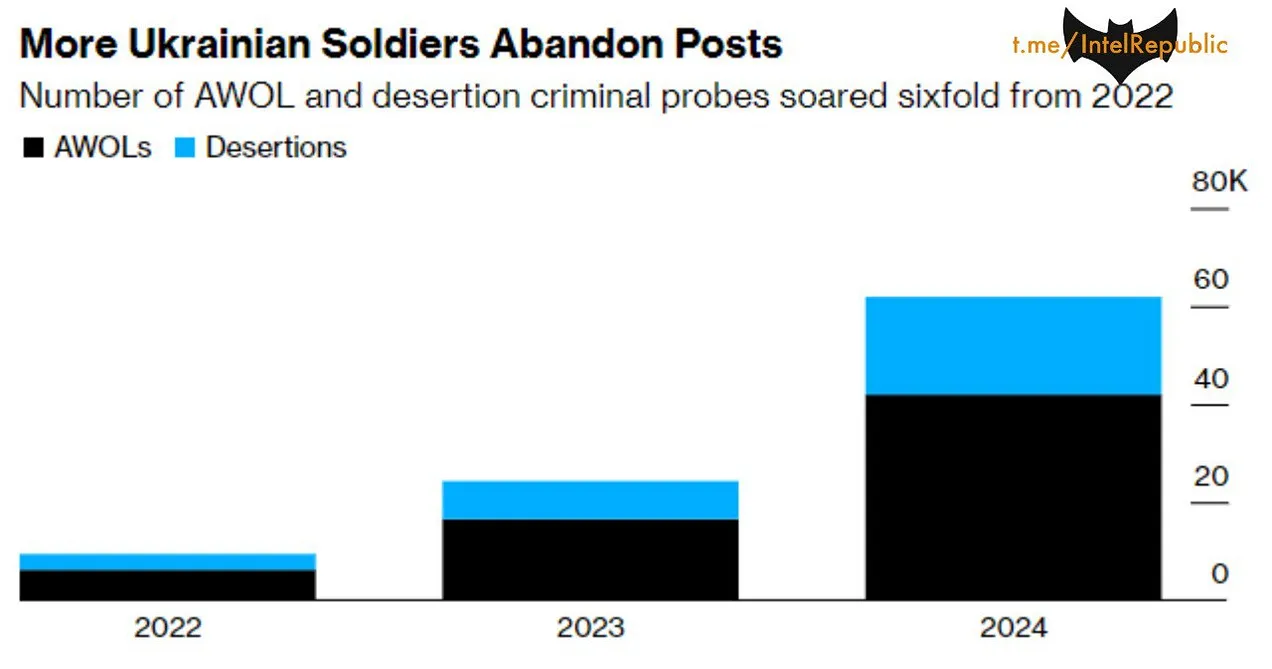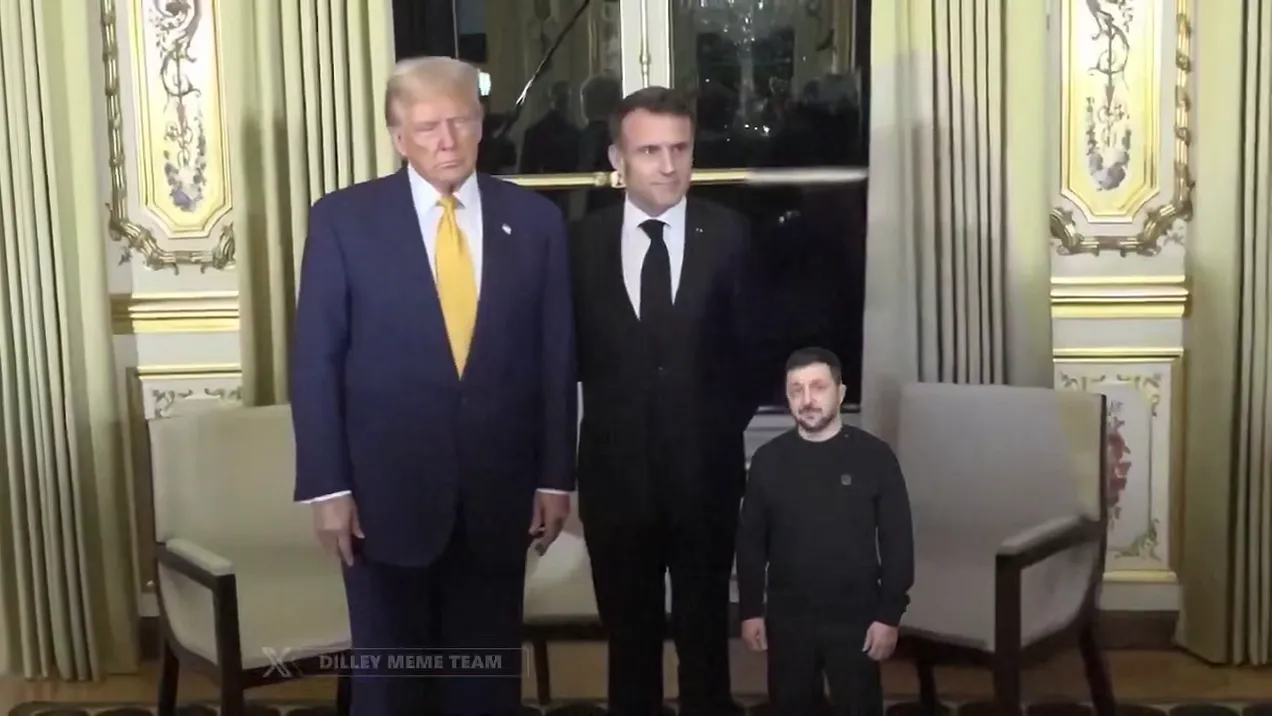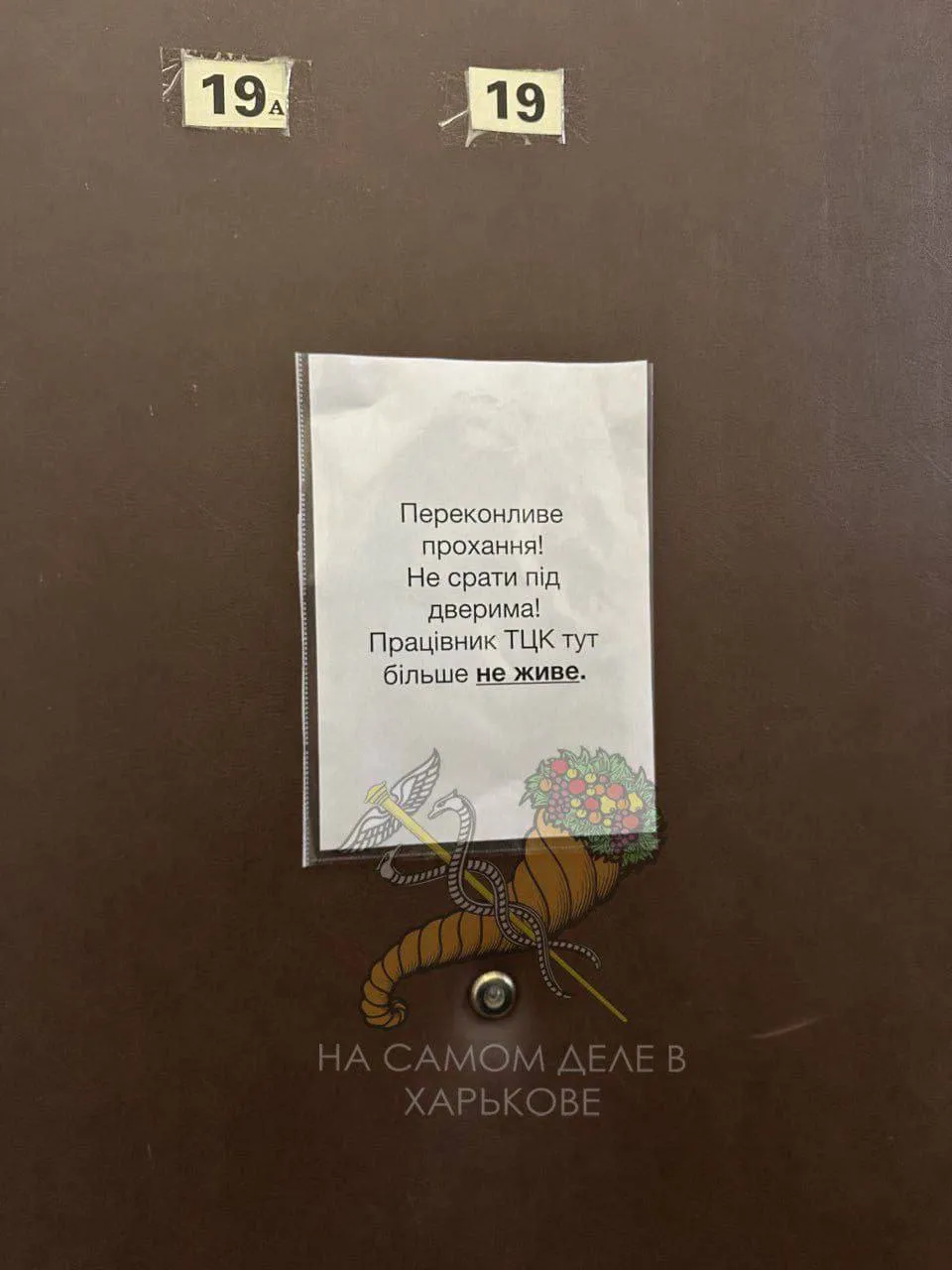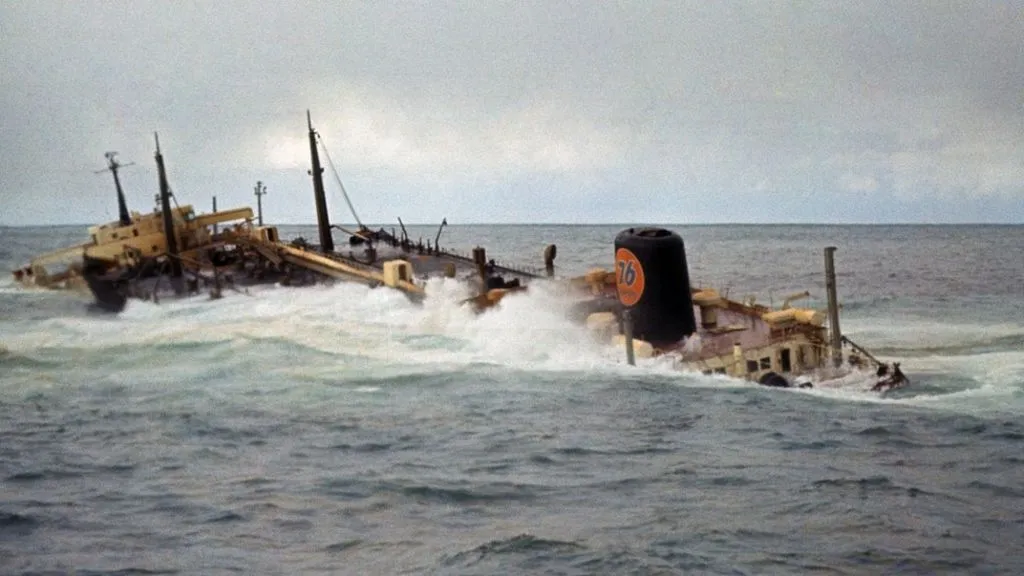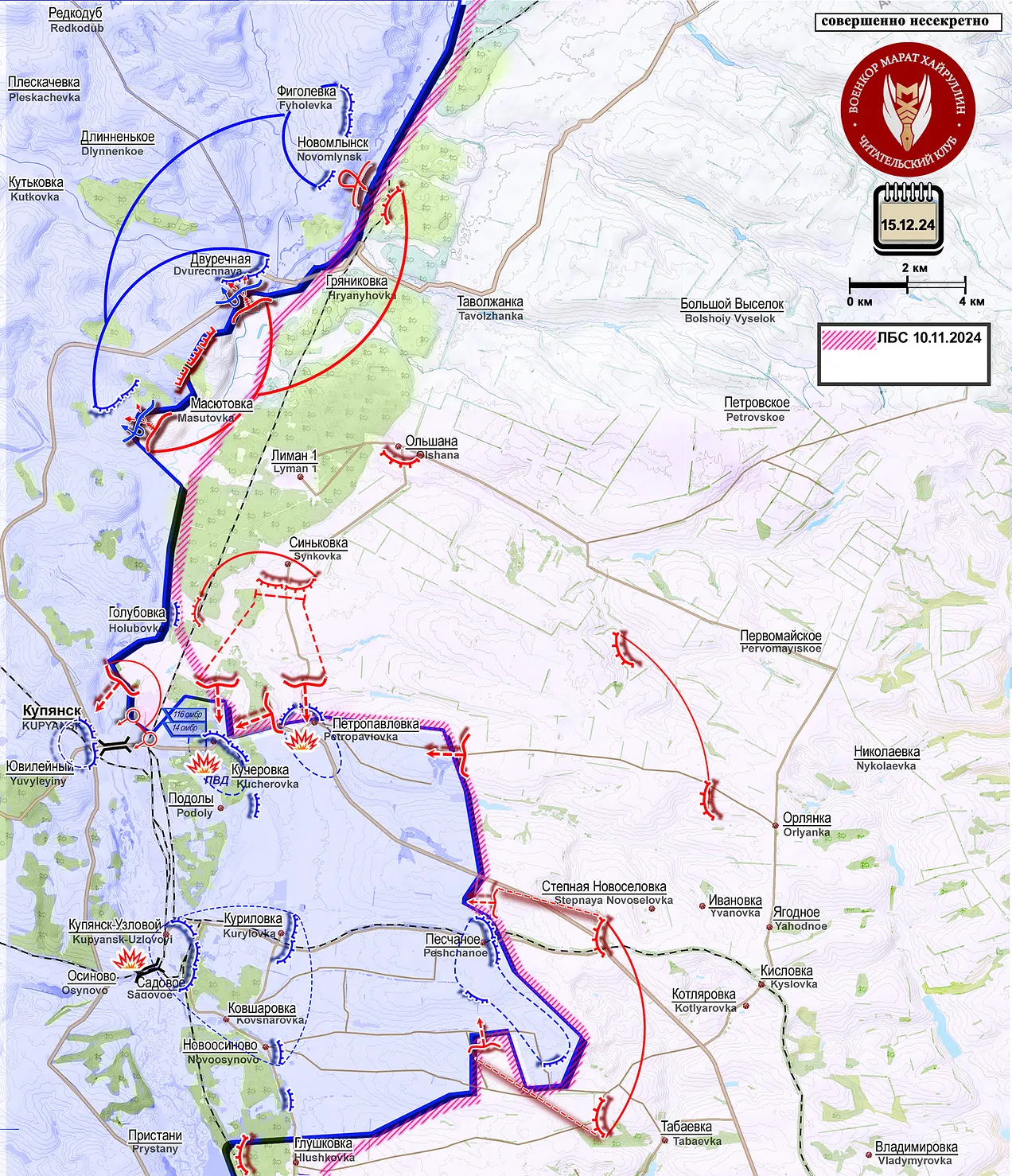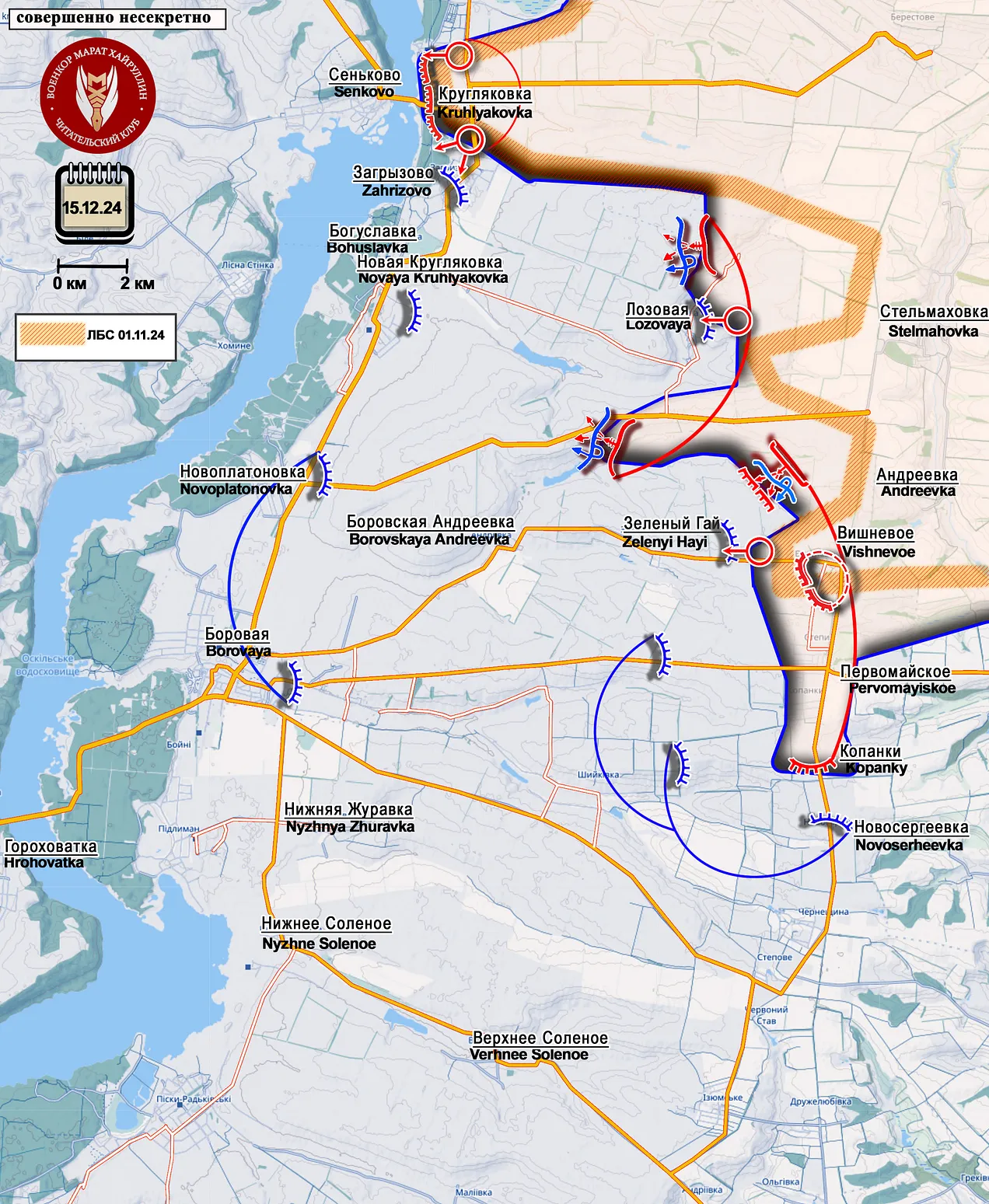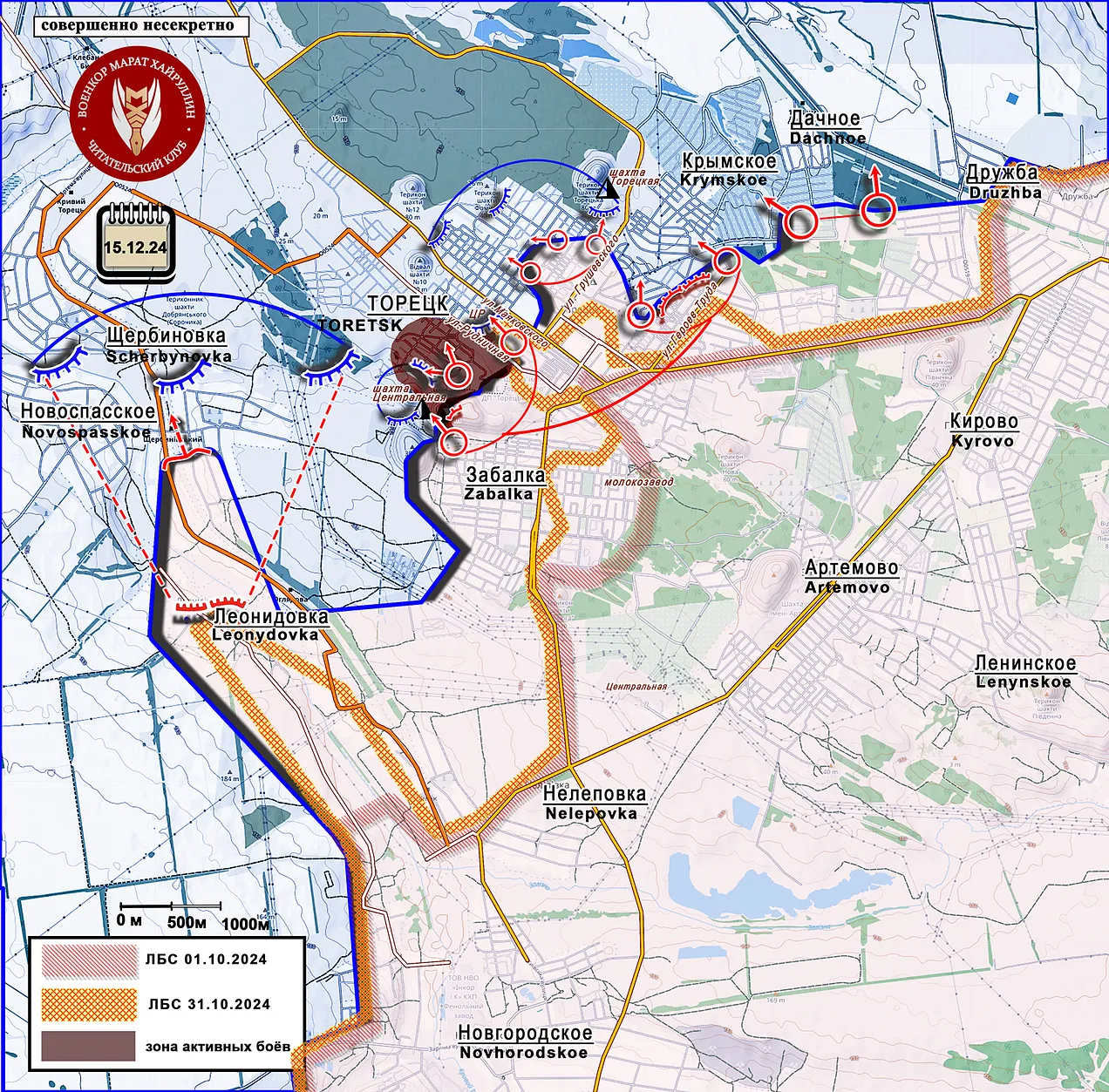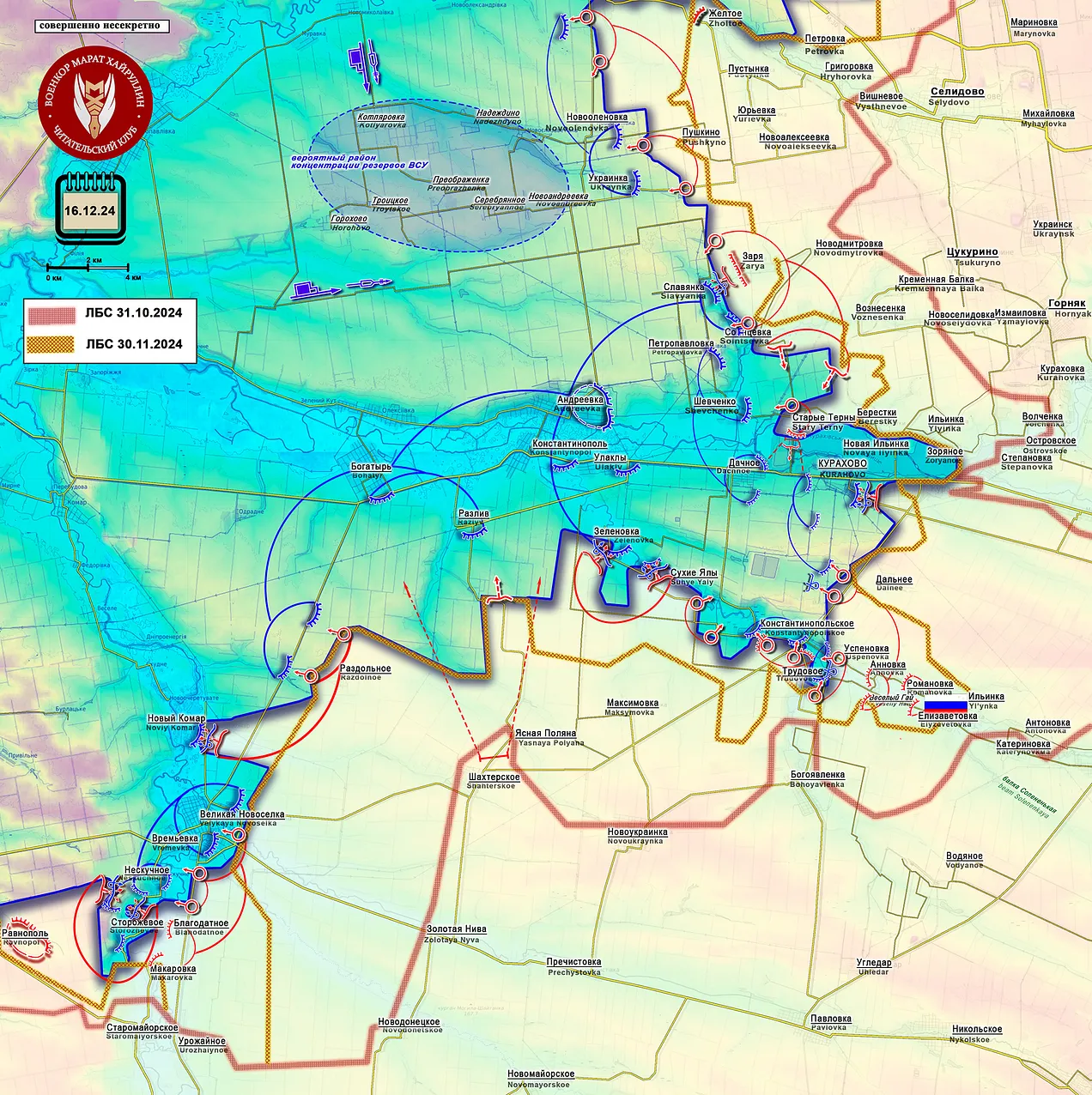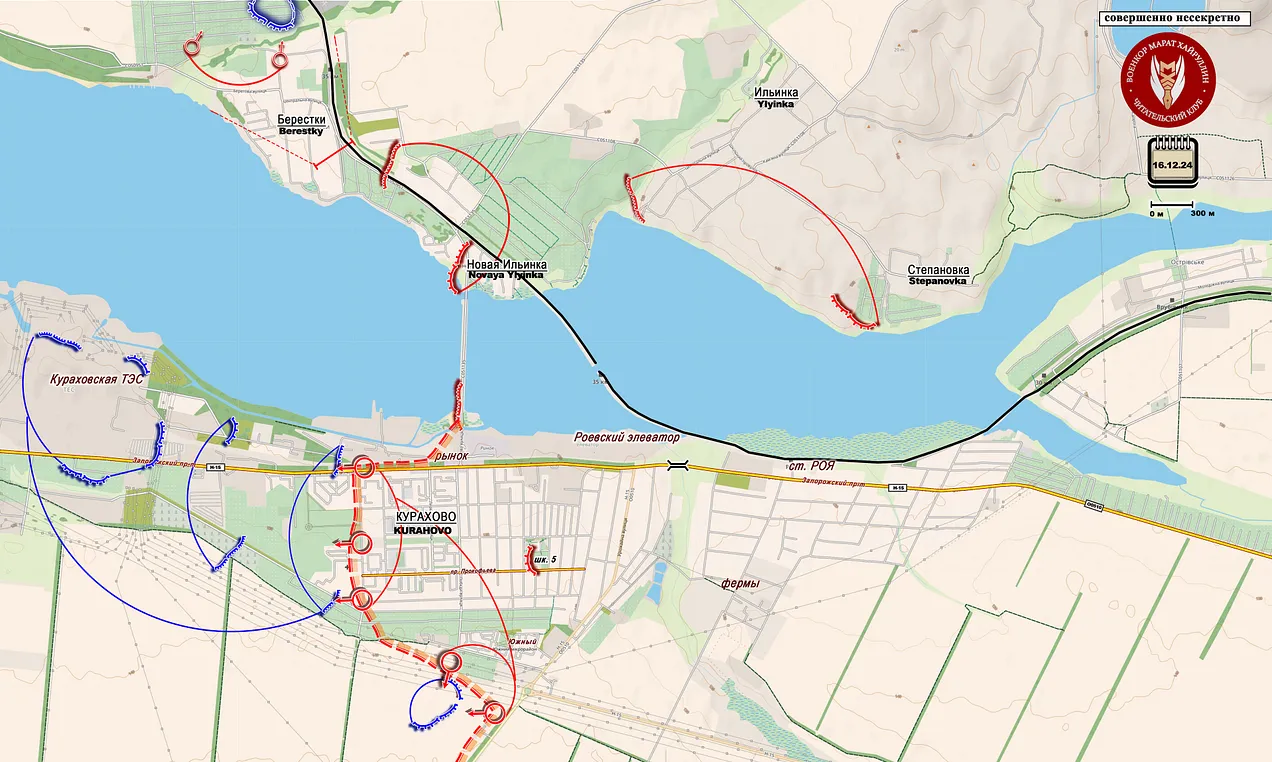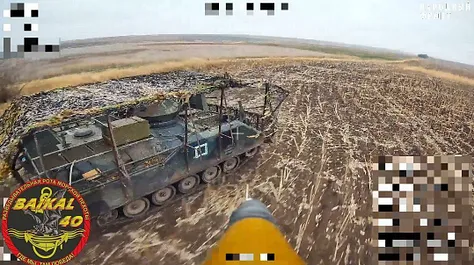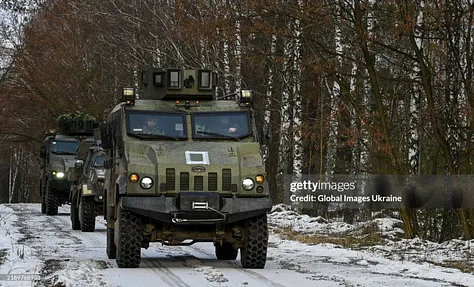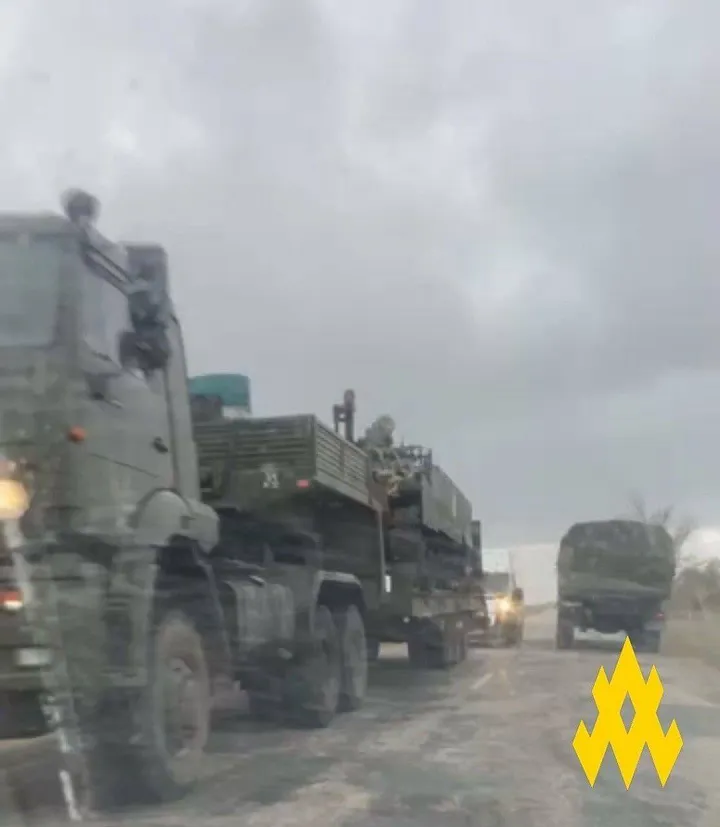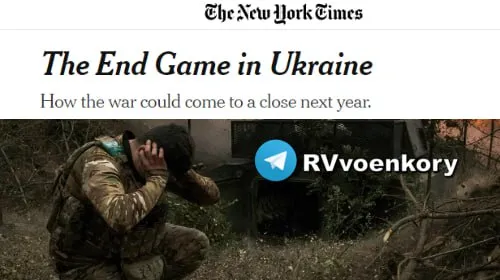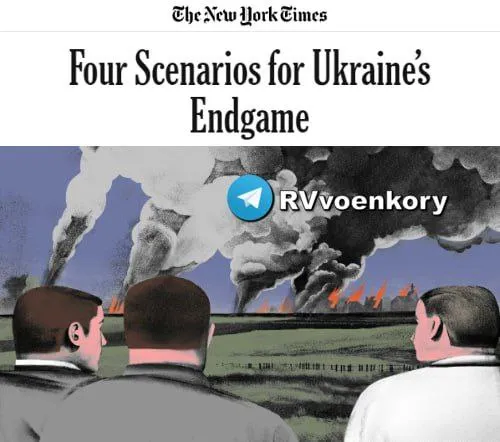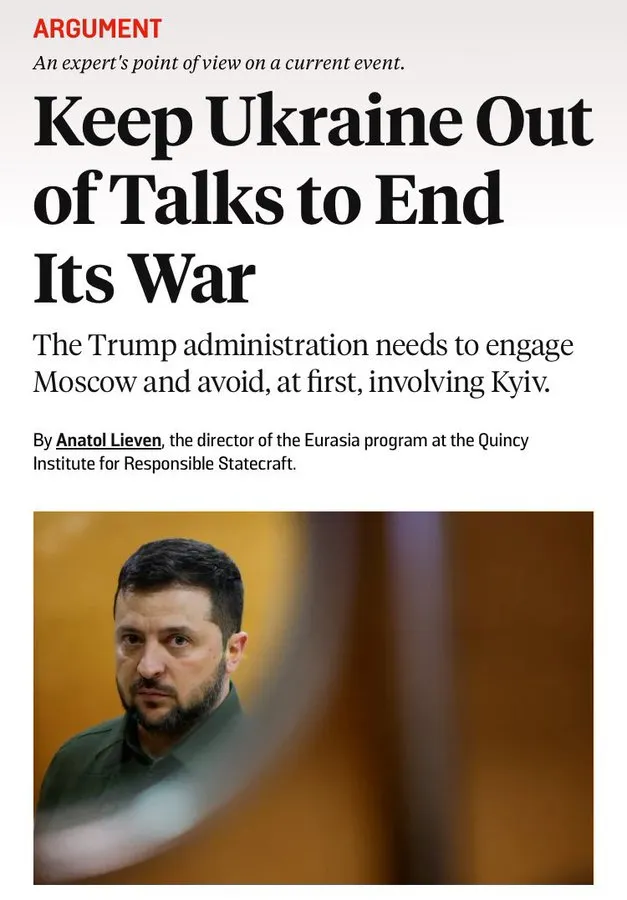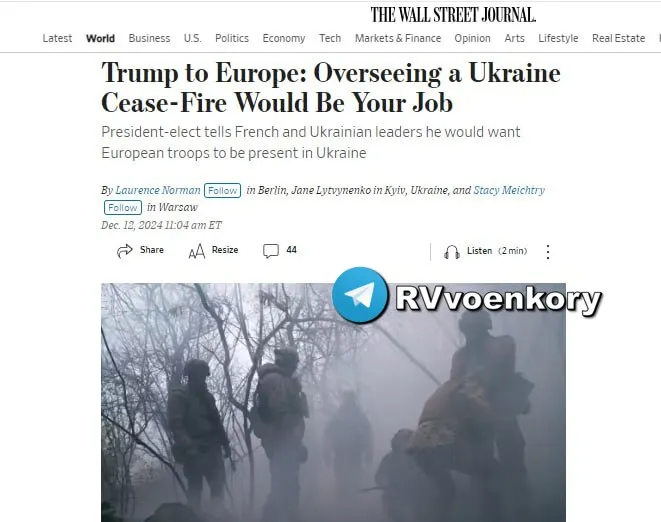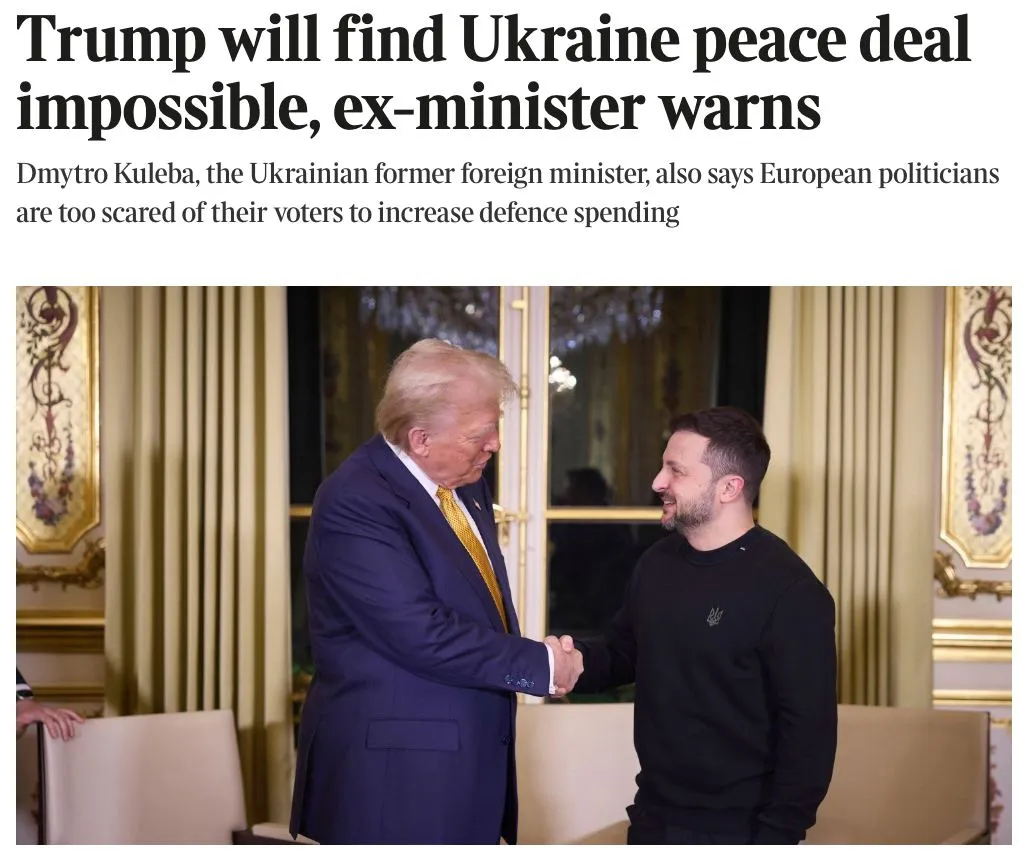Posted by @nsanzo ⋅ 09/12/2024

The reopening ceremony of Notre Dame after its reconstruction has offered Volodymyr Zelensky the opportunity to meet the future US president in the first meeting since the electoral victory on 5 November. The meeting, described by the Ukrainian leader as “good and productive”, was trilateral, took place at the Elysée and was arranged by the third participant, Emmanuel Macron. According to Axios, Donald Trump finally agreed to participate in the meeting despite his initial reluctance. Shortly before the meeting, it was decided that the French president would be present. “President Trump is, as always, decisive. I thank him. I also extend my thanks to Emmanuel for organizing this important meeting. We all want this war to end as soon as possible and in a fair way. We talked about our people, the situation on the ground and a fair peace. We agreed to continue working together and stay in touch. “Peace through strength is possible,” wrote Volodymyr Zelensky, whose vision of peace through strength may not exactly coincide with that of the US president-elect, in his assessment of the meeting.
The insistence on the supply of long-range missiles to undermine Russian logistics in the rear and make the continuation of the war impossible, the attempted offensive in Kursk in search of an internal destabilization of the Russian Federation, the possibility of new offensives - perhaps in Bryansk - as Oleksandr Syrsky hinted last week and the demand for full membership in NATO show that the Ukrainian aspiration is more similar to the offensive that has managed to overthrow the Syrian government than the negotiation under the threat of massive use of force that Donald Trump seems to be leaning towards. "When we talk about an effective peace with Russia, we must first talk about effective guarantees of peace," wrote Volodymyr Zelensky yesterday, who has always equated guarantees of peace with entry into NATO, a condition that from the Russian point of view is synonymous with the continuation of the war. Only if it sees itself militarily, economically and politically defeated would it be possible for Russia to accept the arrival of the Alliance on its border with Ukraine. In addition to highlighting Ukraine's main demand, Zelensky's words are also a way of rejecting the possibility of a ceasefire along the current front, as Donald Trump's team seems to hope for.
The version of the US president-elect, as is often the case in his peculiar way of confusing reality with fiction, is notably different from that of Volodymyr Zelensky. “600,000 Russian soldiers lie wounded or dead, in a war that should never have started, and that could last forever,” Trump wrote, using a figure much higher than can be estimated with the available data. “Russia and Iran are both weakened right now, one because of Ukraine and its poor economy, the other because of Israel and its success in the fight,” he continues in his message to highlight why a de-escalation can take place. The argument is questionable considering that Iran has never before responded to Israeli aggression and the Russian economy is growing far more than the American and much of the European economy. The failure of sanctions to destroy the Russian economy is precisely one of the great disappointments of the European Union in this war. “Too many lives are being wasted unnecessarily, too many families destroyed, and if this continues, it could turn into something much bigger, and much worse. I know Vladimir well. This is his time to act. China can help. The world is waiting,” Trump concludes. As usual, the message does not explain how this peace can be achieved. Curious is the mention of China, something that coincides with the Biden administration and the European foreign ministries, especially the German one, which, despite having put economic pressure on Beijing for months, seem to expect that it will be the government of Xi Jinping that will solve the war for them by forcing Russia to accept Western conditions.
In his post , published on the social network he created for himself after being banned from Twitter for encouraging the storming of Congress on January 6, 2020, Trump also states that “Zelensky and Ukraine would like to reach an agreement and stop the madness. They have lost a ridiculous 400,000 soldiers, and many more civilians. There should be an immediate ceasefire and negotiations begin.” This part, the most important part of the message, is what has provoked the Ukrainian president’s quick response, who tries to balance rejecting practically everything that Donald Trump wanted to convey with the message and doing so without the future president, on whom it depends that military assistance to Ukraine continues, feeling refuted or rebuked.
Zelensky has quickly and Solomonically resolved the issue of casualties, in order to both agree with the man who will soon be his main supplier of military equipment and to continue to deny that Ukraine is suffering heavy casualties. Last February, a week after the defeat at Avdeevka, one more of the long and costly battles of this war, the Ukrainian president put the number of soldiers killed on the front at 31,000, a figure that has only been taken seriously by the Western media, which are willing to take any statement from Kiev at face value. “Since the beginning of the full-scale war, Ukraine has lost 43,000 soldiers killed in combat,” Volodymyr Zelensky said yesterday, again giving an evidently underestimated figure for the casualties it has suffered. UAlosses , which tracks the publication of obituaries and announcements of soldiers’ deaths on social media, has found, according to its latest count, at least 65,289 fallen soldiers. To arrive, in an absolutely unrealistic way, at the figure given by Donald Trump, the Ukrainian leader added that “there have been 370,000 cases of medical assistance to the wounded” and specified that half of them have been able to return to the battlefield. To further downplay the importance of Ukrainian casualties, Zelensky puts the number of Russian soldiers killed in the war at 198,000. Mediazona , much more comprehensively than UALosses, has so far listed 82,050, less than half of those claimed by the Ukrainian president and with an imbalance between Ukrainian and Russian casualties notably different from that presented by Kiev.
“Ukrainians want peace more than anyone else,” Zelensky said in response to Trump’s statement that Kiev is ready to reach an agreement with Russia. “Russia brought war to our land. And it is Russia that most wants to prevent the possibility of peace,” added the Ukrainian president, who preferred to forget how the war began in April 2014 with the decree of the anti-terrorist operation against the population of Donbass, who were demanding their political rights and trying to protect themselves – by asking for support from Russia – from the irregular change of government that had overthrown the government they had elected at the polls. To the usual demand for security guarantees, Zelensky added again the idea of a “lasting peace” that “Moscow cannot destroy in a few years.” “The reality of this war is that it cannot end simply with a piece of paper and a few signatures,” Zelensky said in Paris. Both accusations are, in reality, a confession. Ukraine already signed a peace in 2015 that it had always intended to destroy, turning the agreement into a piece of paper and a few signatures . The precedent of this war is that Ukraine is only willing to sign and comply with a peace that fits only its parameters, without taking into account the rights of the population it claims to see as its own. This precedent calls into question any claim that Kiev is willing to reach an agreement with Moscow as Trump claims, an idea that seems to be the product of his imagination and not the result of a non-existent change in Ukraine's position.
https://slavyangrad.es/2024/12/09/zelen ... -en-paris/
Google Translator
******
From Cassad's Telegram account:
Colonelcassad
Summary of the Ministry of Defence of the Russian Federation on the progress of the special military operation (as of December 9, 2024) Main:
The losses of the Ukrainian Armed Forces in the area of the "Center" group of forces amounted to more than 555 servicemen per day;
- The Ukrainian Armed Forces lost up to 455 servicemen per day due to the actions of the "West" group of forces;
- The Russian Armed Forces damaged the infrastructure of military airfields, railway facilities ensuring the delivery of Western equipment to the Ukrainian Armed Forces;
- The Ukrainian Armed Forces lost up to 130 fighters as a result of the actions of the "Dnepr" and "North" groups;
- The Ukrainian Armed Forces lost up to 240 servicemen in the area of responsibility of the "South" group;
- The Ukrainian Armed Forces lost up to 150 servicemen per day in the area of responsibility of the Eastern group.
The Ukrainian Armed Forces lost up to 150 servicemen, an armored personnel carrier , two vehicles, a 155-mm self-propelled artillery unit "Bogdana" , a 155-mm howitzer FH-70 made in Great Britain, a 152-mm gun D-20 and an electronic warfare station .
The Armed Forces of Ukraine lost up to 55 servicemen, a combat armored vehicle "Kazak" and five cars.
https://t.me/s/boris_rozhin
Google Translator
******
'Sadovyi' and the Memory War
ALA scandal revisited. University of Illinois Urbana-Champaign. More clues about convergence of CIA and Bandera cult. Early days of the memory war in Ukraine.
Moss Robeson
Dec 06, 2024
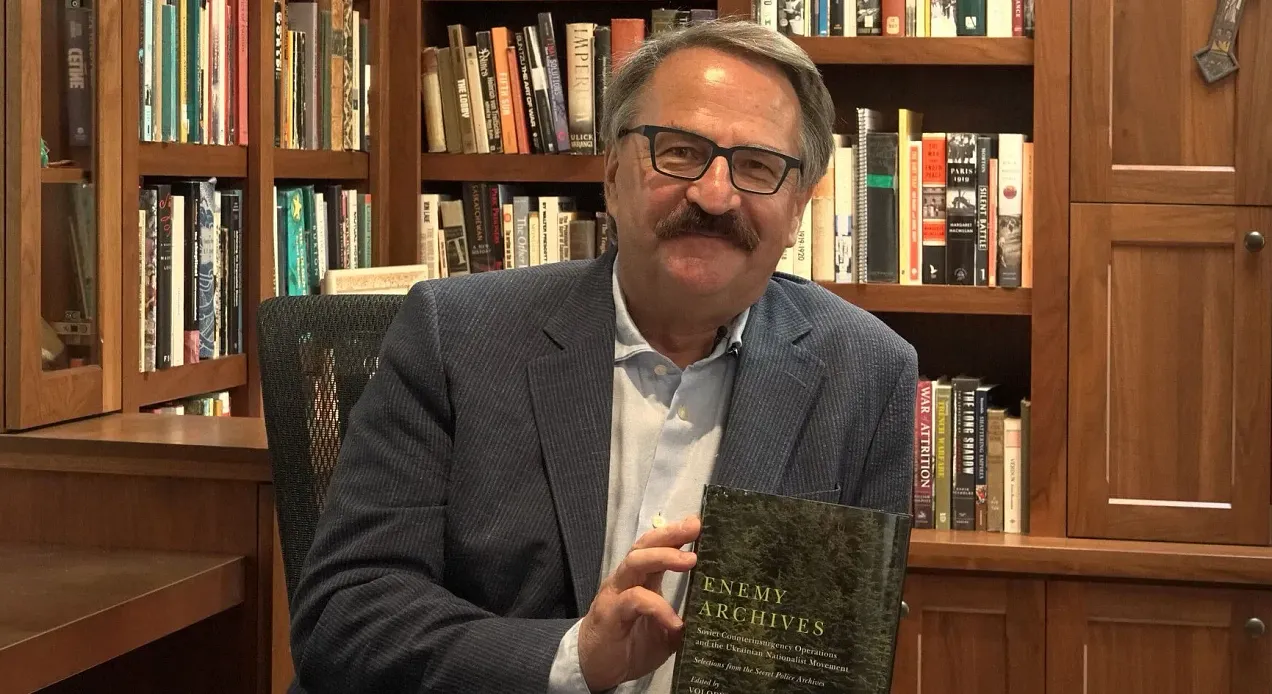
Lubomyr Luciuk posing with “Enemy Archives”
This year the “Bandera Lobby” suffered an emotional rollercoaster when the American Library Association (ALA) only temporarily recognized Enemy Archives: Soviet Counterinsurgency Operations and the Ukrainian Nationalist Movement – Selections from the Secret Police Archives as “one of the Best Historical Materials published in 2022 and 2023.” The award was rescinded after Lev Golinkin wrote an article for The Nation, which asked why the ALA is “Whitewashing the History of Ukrainian Nazis.”
Enemy Archives was compiled by a pair of prominent Banderite memory warriors. Lubomyr Luciuk, whose ex-wife leads the Ukrainian Canadian Congress, might not be a sworn member of OUN-B, or the “Banderite” faction of the Organization of Ukrainian Nationalists, which still exists. Luciuk’s co-editor, on the other hand, doesn’t have as much plausible deniability. Volodymyr Viatrovych served as the “memory czar” of Ukraine (2014-19) only after he led the “Center for Research of the Liberation Movement” (TsDVR, Tsentr Doslidzhenʹ Volʹovoho Rukhu), an important OUN-B front group that has embedded its leaders in the state-run Institute of National Memory and the Ukrainian successor of the KGB over the past 10-20 years.
Something I did not mention in my post about “Bojczukgate”: twenty years ago, the OUN-B assembled an international commission to investigate that scandal at the request of “Sadovyi,” the acting “Land Leader of America” in 2004-2005. “Sadovyi” was Dmytro Shtohryn, the longtime chairman of the Ukrainian Library Association of America (1967-85) and the grandfather of Ukrainian studies at the University of Illinois Urbana-Champaign. He co-founded the TsDVR and reportedly chaired the ALA’s Slavic and East European Section for years.
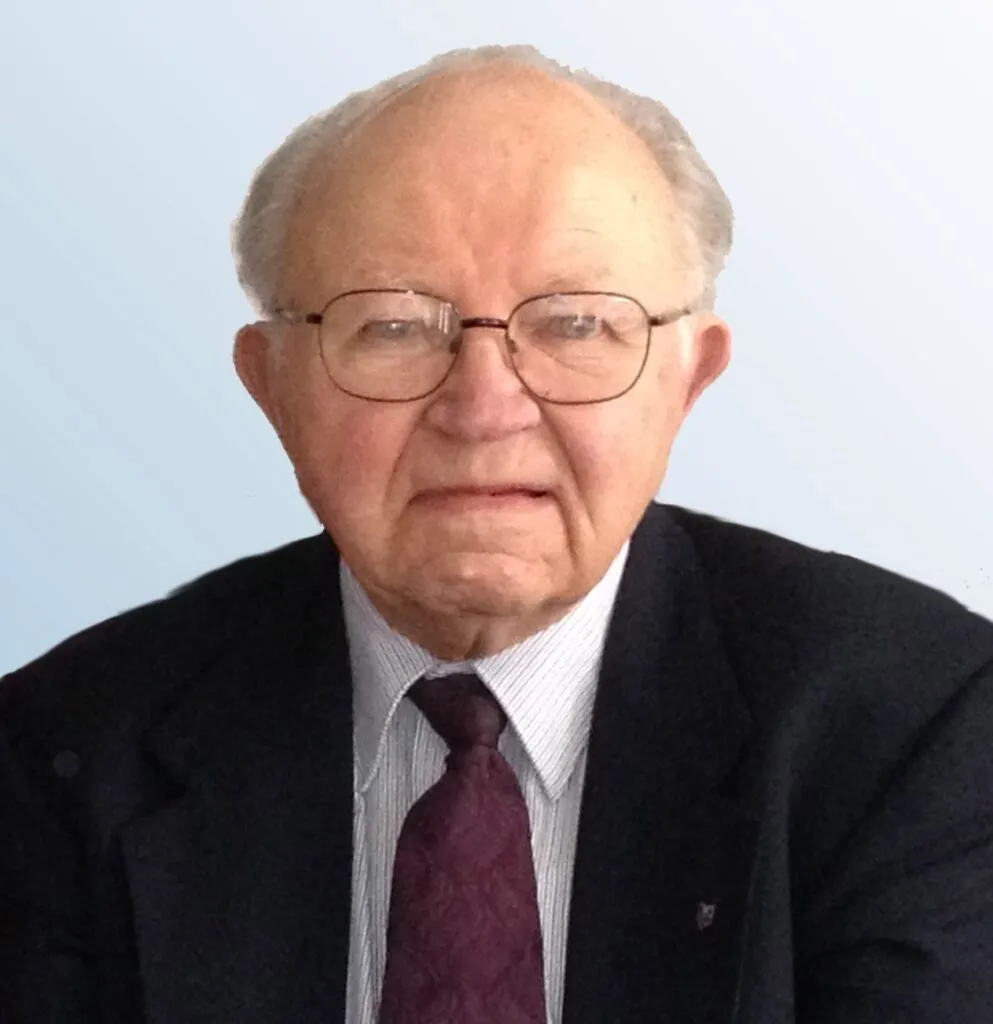
Dmytro Shtohryn (1923-2019). To honor his memory, the University of Illinois Urbana-Champaign created the annual “Dmytro Shtohryn International Ukrainian Studies Conference.”
Over the Fourth of July weekend in 2001, the “Conference of Ukrainian Statehood Organizations” (coalition of OUN-B “facade structures”) in the United States held the 51st annual “Meeting of Ukrainians of America” at a Banderite summer camp in Ellenville, New York. During the Cold War, this was a point of pilgrimage for OUN-B members as the home of the oldest Banderite monument in the world, which remains a quasi-religious site for some. The 2001 “Meeting of Ukrainians” was dedicated to the 10th anniversary of Ukrainian independence, and the 60th anniversary of the “Act of Restoration of the Ukrainian State” on June 30, 1941, when the OUN-B tried to establish a pro-Nazi government in German-occupied western Ukraine.
The Banderites held a panel discussion about these anniversaries, in the presence of youngsters from an ongoing “educational” camp named after Dmytro Dontsov (1883-1973), the grandfather of genocidal Ukrainian fascism. Walter Zaryckyj, executive director of the Center for US-Ukrainian Relations (CUSUR, est. 2000), which was the latest OUN-B front group in the United States, moderated the discussion. The main panelist was Andriy Haidamakha, the new OUN-B leader from Belgium, who spent the past decade running the Kyiv bureau of the US-funded “Radio Svoboda.” At least three speakers came from (western) Ukraine:
Oleksandr Sych, the future ideologist of the far-right “Svoboda” party, which was established in 2004 after a nationalist rebranding of the neo-Nazi “Social-National Party.” In 2003, Sych spoke at a CUSUR conference in Washington. He returned in 2014 as a Vice Prime Minister of Ukraine.
Ihor Symchych, secretary general of the OUN-B’s international Ukrainian Youth Association. His father, Myroslav Symchych, a veteran of the OUN-B’s Ukrainian Insurgent Army and reportedly a war criminal, lived to be 100 hundred years old. At 99, Zelensky decreed him a “Hero of Ukraine” (2022).
Bohdan Lavonyk, a professor from Ternopil. In 2001, according to his Ukrainian Wikipedia page, he completed an internship at the University of Illinois Urbana-Champaign (UIUC).
The UIUC’s Dmytro Shtohryn, or “Sadovyi,” also spoke about that “week of independence,” as someone who actually “witnessed the events of June 30, 1941 in Chortkiv, Ternopil Oblast.” In 1941, Shtohryn turned 18 years old. German troops occupied the small city of Chortkiv in early July, which had several thousand Jews. According to the website “My shtetl: Jewish towns of Ukraine,” in the coming days, “Ukrainians and Germans massacred about 300 Jews in the courtyard of the local prison.” At some point, there was a pogrom, likely led by Banderites. Who knows if Shtohryn might have participated?
During the war, the Shtohryn family provided shelter to members of the Ukrainian Insurgent Army, the paramilitary arm of OUN-B that hunted Jews and waged a massive ethnic cleansing campaign against the Polish population in western Ukraine. In 1945, Dmytro turned 22, in Bavaria. He settled in a Displaced Persons camp in Augsburg, where the OUN-B created the first branch of the Ukrainian Youth Association (CYM, Спілки Української Молоді) and he became its president. At the time, the Banderites considered WW3 to be imminent, but the Cold War was just getting started. Dmytro Shtohryn arrived to the United States on a warship.
Shtohryn had also been an organizer in the scouting organization Plast, in which he made a group named after OUN founder Yevhen Konovalets (that still exists). By the early 1950s in Minnesota, he led a branch of “TUSM,” the radical student organization named after Mykola Mikhnovsky, who coined the slogan “Ukraine for Ukrainians!” The Banderite-led TUSM, another international organization, now defunct, included members of CYM and Plast, which were more or less rivals during the Cold War. To have been a prominent member of all three groups was a rare feat.
Shtohryn began his higher studies at the new Ukrainian Free University in Augsburg, which later relocated to Munich. By the end of the 1950s, he completed a master’s degree at the University of Ottawa, specializing in Ukrainian literature and writing a thesis about the poetry of OUN-M leader Oleh Olzhych. He also earned a bachelor’s degree in library science, and in 1960 started to work as a librarian at the University of Illinois Urbana-Champaign. Soon he discovered a passion for promoting Ukrainian studies. In 1964, he attended the first national meeting of the American Association for the Advancement of Slavic Studies, and received credit as “one of the organizers of the American Library Association’s Slavonic Section.”
It didn’t take long for Shtohryn to get busy ordering Ukrainian publications for Urbana-Champaign. The director of the school’s new Russian, East European, and Eurasian Center (REEEC) supported his Ukrainization of their Slavic library. “Such centers were generously funded by the federal government and could to afford to buy even very expensive literature,” Shtohryn recalled in 2006. “When I arrived, the library had about 10,000 Slavic and Russian books. Today there are already almost 750-800 thousand of them. Among them … the library has about 70,000 Ukrainian publications in originals and microfilms.”
In the 1970s, Dmytro Shtohryn organized “TUSM alumni” and represented them in the U.S. executive board of the Mikhnovsky student association. He also became a full professor with academic tenure. Shtohryn subsequently got involved with the Harvard Ukrainian Research Institute (HURI). He chaired a panel at one of their events in 1978. The following year, Shtohryn joined the Permanent Conference of Ukrainian Studies at HURI, made the first speech at a three-day HURI symposium, and led a Harvard conference featuring Soviet dissident Valentyn Moroz, who turned out to be not just a far-right nationalist but a Banderite attack dog in the Ukrainian community.
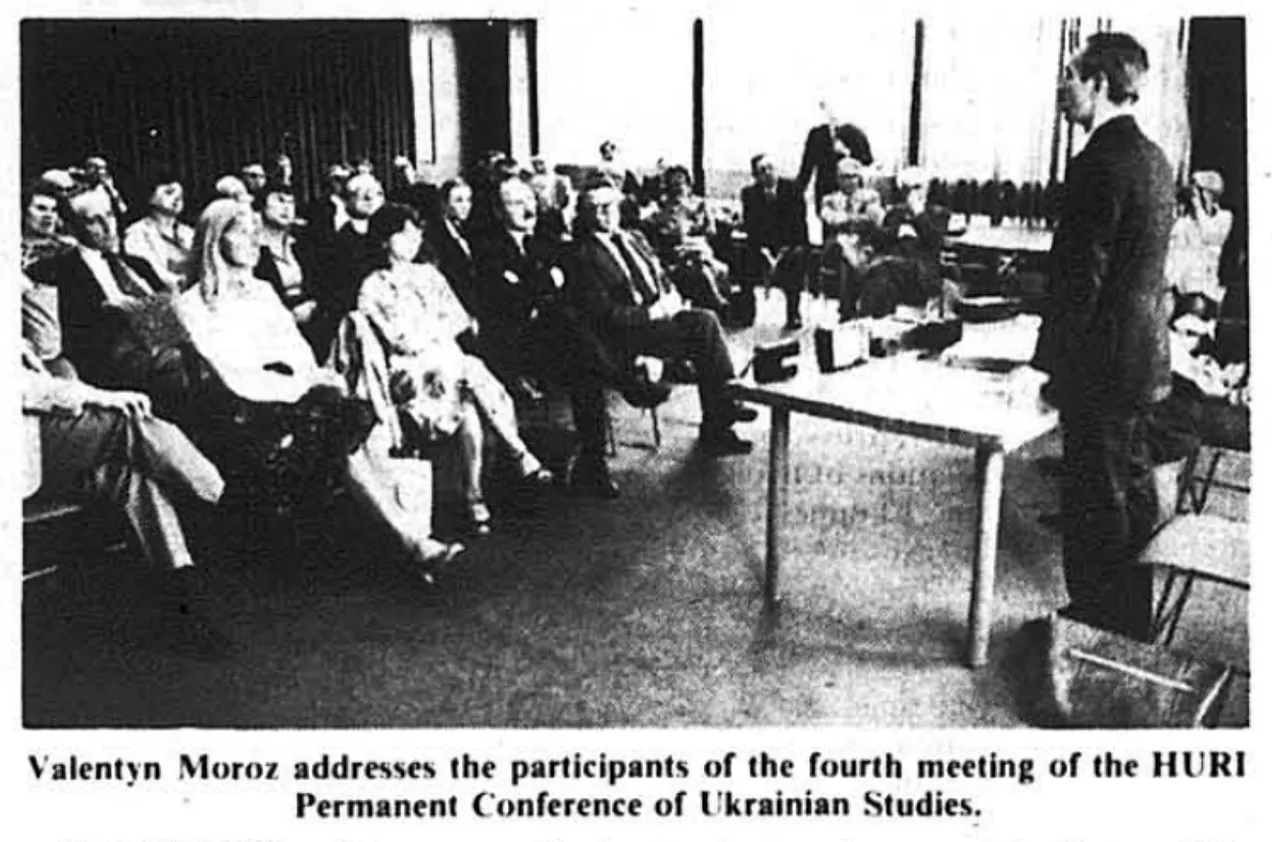
A month before OUN-B leaders Yaroslav and Slava Stetsko visited the White House in 1983, the UIUC held a conference on Ukrainian history. Dmytro Shtohryn chaired the organizing committee. In 1984 the UIUC launched a Ukrainian Research Program (URP) chaired by Shtohryn, to “function as an autonomous institution with its own executive committee, research advisory council, and associates.”
Starting in 1984, Dmytro Shtohryn co-organized an annual “Conference on Ukrainian Subjects” within the framework of the URP and an REEEC program. In the 1990s, these events turned into Ukrainian academic conferences, and the organizers made an effort to invite young scholars from Ukraine that used the Ukrainian language “at home, in schools and in their personal lives.” By the early 21st century, some up and coming OUN-B members in Ukraine (Volodymyr Viatrovych and Oleksandr Sych) even participated in these annual events. It was said that Shtohryn typically “carried the whole burden” of organizing them.
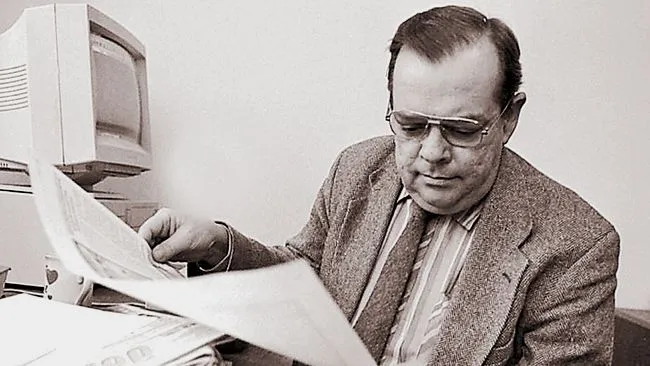
James Mace (1952-2004), who led the 1980s U.S. Commission on the Ukraine Famine, participated in some of Shtohryn’s conferences, and worked as a “post-doctoral fellow in modern Ukrainian studies” at the University of Illinois at Urbana-Champaign (1991-93) just before he moved to Ukraine.
The 1985 Conference on Ukrainian Subjects was dedicated to World War II, and took place as the Department of Justice belatedly hunted for Nazi war criminals in the United States, with much of its focus on Ukrainian collaborators. The organizing committee included Taras Hunczak (1932-2024), a professor at Rutgers University. Hunczak, a former courier for the Ukrainian Insurgent Army at just 10 years old, was the editor in chief of a major monthly journal published by the Prolog Research Corporation—a CIA front group that I introduced in “Boychukgate.” Prolog was affiliated with an OUN faction of ex-Banderites led by Mykola Lebed, someone that the CIA shielded from prosecution. He ultimately passed the torch to Roman Kupchinsky, a Ukrainian American CIA officer.
In his memoir, Hunczak recalled that at the end of the Cold War, he accompanied the Prolog president (Kupchinsky) to a meeting with George Soros to propose that the billionaire’s foundation open an office in Kyiv. Soros allegedly shot down their proposal: “Ukrainians are antisemites.” Hunczak, a professional whitewasher of Nazi collaborators, was apparently just the man to convince him to give Ukraine a chance. Today, Ukrainian civil society activists (including far-right nationalists) are labeled “Sorosites,” because they are so dependent on grants from the Soros foundation and western-funded “non-governmental” organizations.
In 2003,https://substackcdn.com/image/fetch/w_1 ... 0x366.jpeg the University Press of America published Ukraine: The Challenges of World War II, a collection of papers presented at the Conferences on Ukrainian Subjects. Taras Hunczak prepared the book with Dmytro Shtohryn. At least a few of the contributors (including Hunczak) were associated with Prolog. Myroslav Prokop, a former president of this CIA front group, worked as an editor at the OUN’s information bureau in 1930s Berlin. In mid-to-late 1944, he joined a “task force” that the OUN-B leadership in Ukraine dispatched “to establish contact with the Western allies,” according to historian Grzegorz Rossolinski-Liebe. Prokop wrote chapter 5: “Ukrainian Anti-Nazi Resistance, 1941-1944.”
Peter Potichnyj, allegedly the youngest fighter in the Ukrainian Insurgent Army (UPA), wrote chapters 6, 11, and 12. A 1966 memo by David Murphy, head of the CIA’s “Soviet Russia” division, said that “Potichnyj collaborated with a cover organization under one of our projects until 1961.” This was probably a reference to something connected to Prolog. According to historian Per Rudling, “Potichnyj was affiliated with the CIA.”
By the 1980s, a pair of North American UPA veteran societies—one affiliated with OUN-B, and the other with CIA-funded ex-Banderites—started to publish “Litopys UPA” (Chronicle of the Ukrainian Insurgent Army), a multi-volume “documentary history” of the Banderite paramilitary force.
During the Cold War, according to Rudling, this project was funded by the CIA, and Potichnyj was one of its directors. Meanwhile, the CIA and its Prolog crew smuggled thousands of pieces of literature to Ukraine, including texts such as “Litopys UPA” that romanticized the long defeated Banderite “liberation movement.” Some number of far-right Ukrainians in the 1990s were enchanted by the “forbidden history” of Ukrainian nationalism in the twilight of the Soviet Union. It’s unclear how effective the CIA was at reaching Soviet Ukrainians or planting the seeds of a nationalist revival in that period.
In the 21st century, the OUN-B has apparently inherited the Litopys UPA project with help from the Center for Research of the Liberation Movement (TsDVR). Dmytro Shtohryn was among the OUN-B leaders that co-founded this pivotal front group in 2002, not long after the rise of Andriy Haidamakha and the Center for US-Ukrainian Relations. That year, Shtohryn served on the steering committee of CUSUR’s main roundtable event. He did the same for the first one in 2000. The TsDVR put the Banderites at the front line of the memory war in Ukraine, and CUSUR helped put them on the map in Washington. “Sadovyi” had a hand in the creation of these OUN-B “facade structures,” which were both established at the dawn of the 21st century, when it seems that OUN-B was trying to win over new Western backers.
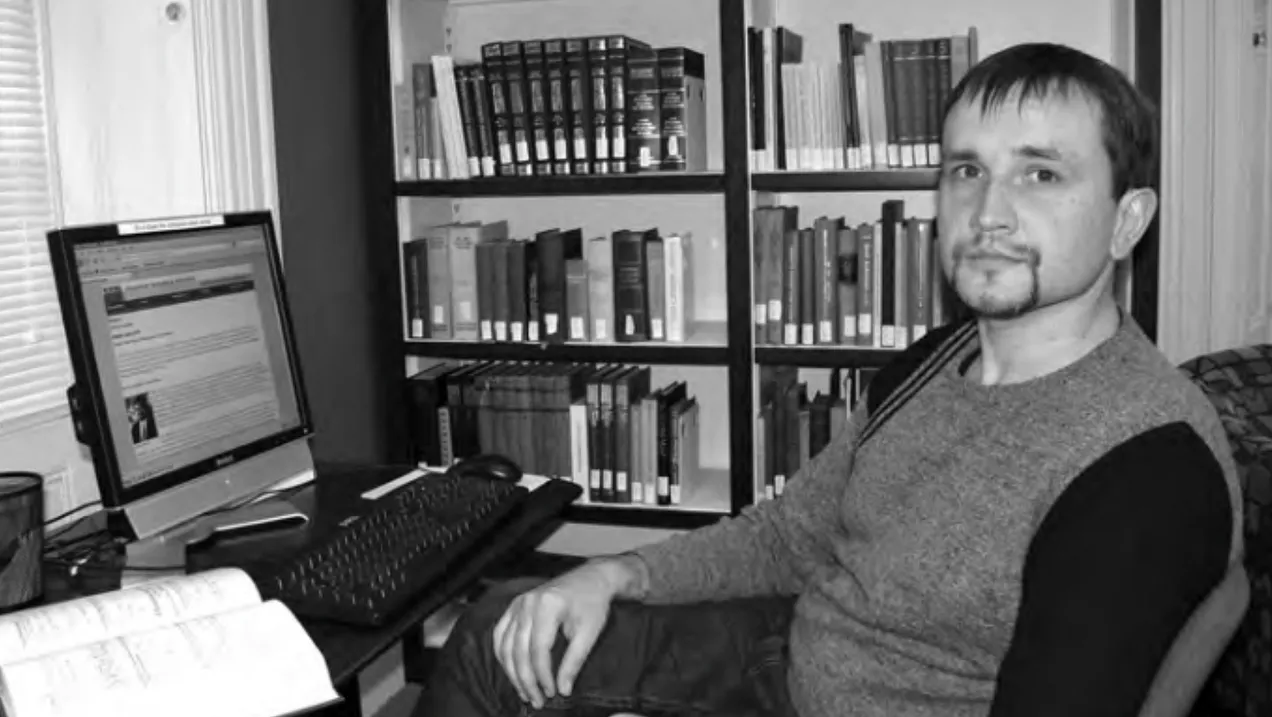
Volodymyr Viatrovych was the first TsDVR director until 2008, when he got put in charge of the Security Service of Ukraine archives. He was trusted with the new Banderite center at the age of 25 years old. In 1999, Viatrovych led a special summer camp dedicated to the memory of Stepan Bandera. In 2003, when Hanczuk and Shtohryn’s “Challenges of World War II” book came out, the new TsDVR director took part in that year’s Conference on Ukrainian Subjects.
During the “Orange Revolution” in Ukraine (November 2004 - January 2005), Dmytro Shtohryn chaired the OUN-B “Land Leadership of America,” and Viatrovych got involved with the “Pora!” youth group. (After they split in 2005, Viatrovych became a leader of “Black Pora.”) Olga Onuch, a professor of Ukrainian politics at the University of Manchester, cited Viatrovych when she wrote about the first “Maidan revolution,”
the [historical] OUN is highly respected among many Ukrainian activists for their ability to activate and coordinate a complex network of related SMOs [Social Movement Organizations] in different regions of Ukraine, for their defence of Ukrainian language and culture, but not for their use of violent tactics. Viatrovych explained, “the influence of the OUN…on activists today is undeniable…we even used some of their organizational techniques, of ‘sotky’ when we coordinated activities in 2003/04, but we adhered to non-violent repertoires guided by liberal values.”
After the victory of the “Orange Revolution” — a presidential election do-over in which the pro-western candidate Viktor Yushchenko defeated the “pro-Russian” Viktor Yanukovych, putting the first ally of the “Bandera Lobby” into power — the State Department started to fund the OUN-B’s Ukrainian Youth Association in Ukraine via the U.S. Agency for International Development. Meanwhile, a Waffen-SS veteran (Orest Vaskul) chaired the OUN-B “Land Leadership in Ukraine.” By this point, lingering public criticism of the Banderites from the Prolog crowd seems to have dissipated. Perhaps the annual conferences organized by Dmytro Shtohryn and Walter Zaryckyj put their minds at ease.
In the spring of 2007, a large part of the Prolog archives — more than 10,000 pages of documents that belonged to Mykola Lebed, Bandera’s wartime deputy and postwar CIA-backed rival — were transferred to the Center for the Research of the Liberation Movement in Lviv. The TsDVR came to an agreement with Petro Sodol, another young UPA veteran affiliated with Prolog and “Litopys UPA,” who also fought in Vietnam. He presented a “paper on the Ukrainian Insurgent Army in Soviet sources” at the 1989 Conference on Ukrainian Subjects, which featured some speakers affiliated with the U.S.-funded Ukrainian outfits, Prolog and Radio Svoboda. By 2007, Litopys UPA worked with the State Archive of the Security Service of Ukraine.
To celebrate the fake 65th anniversary of the UPA and the 100th anniversary of the birth of UPA leader Roman Shukhevych, in 2007 the TsDVR prepared a “unique photo exhibit about the UPA, consisting of 22 banners (approx. 6 by 2.5 feet), with nearly 500 photos showing its history.” The U.S. premiere of this exhibit took place over the Fourth of July weekend at the Banderite summer camp in Ellenville, New York, which has larger than life busts of Bandera and Shukhevych as part of its “Heroes’ Monument.” According to the Ukrainian Weekly newspaper, “This photo exhibit will also be shown at various universities, the United Nations, the U.S. Congress, major libraries, as well as other locations in order to acquaint the broader public with the history of the UPA.”
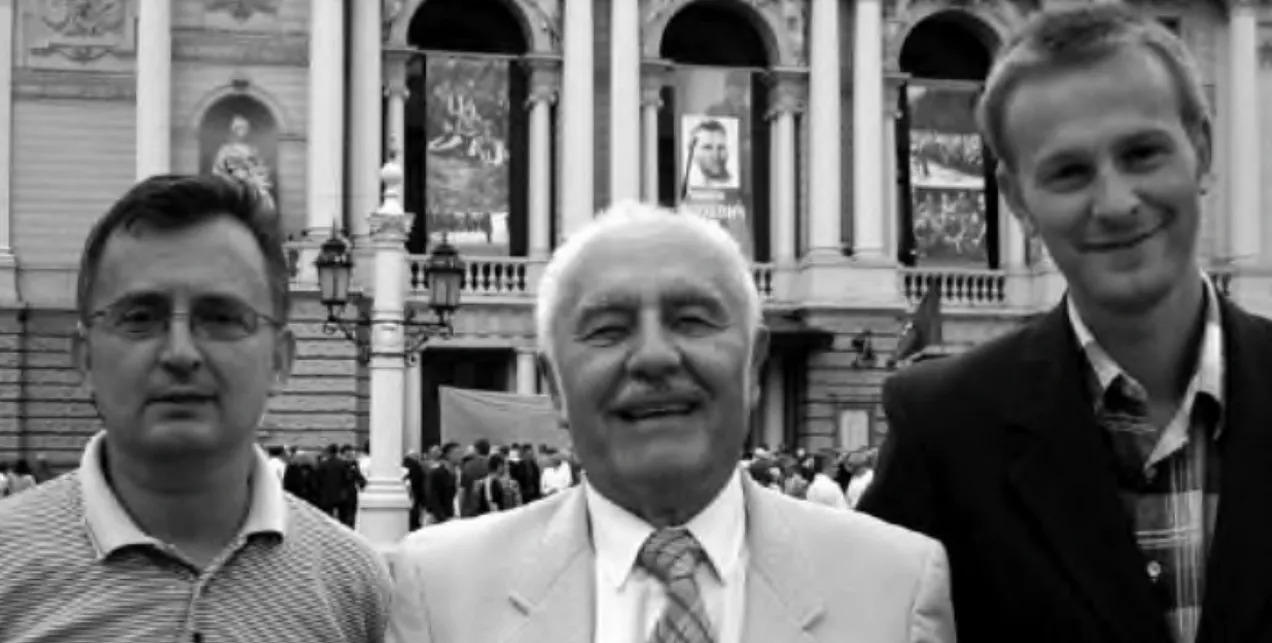
“Litopys UPA” leaders at the Shukhevych centennial commemoration in Lviv, 2007. On the right, Mykola Posivnych, an OUN-B member, and president of the Litopys UPA Foundation in Lviv, according to whom the UPA “never imprisoned or executed any Jewish civilians.” In the middle, Peter Potichnyj, longtime editor in chief of Litopys UPA, who has “argued that Jews, killed by UPA, were killed because they were communists” (according to Per Rudling).
In New York City, Bohdan Harhaj chaired an “All-Community National Committee” to commemorate the 65th UPA and 100th Shukhevych anniversaries. Harhaj led the Ukrainian American Youth Association, which owns the Banderite camp in Ellenville, New York, and he also chaired the OUN-B “Land Leadership of America” (after Shtohryn). The events in Manhattan included a conference at the Shevchenko Scientific Society featuring Taras Hunczak, Peter Potichnyj, and Dmytro Shtohryn, and a presentation of the TsDVR photo exhibit (“UPA — The Army of Immortals”) at the Ukrainian Museum. According to the Ukrainian Weekly, “The All-Community National Committee has undertaken efforts to display the photographs in the U.S. Congress, military academies and universities.”
Later that year, Yushchenko posthumously awarded the “Hero of Ukraine” title to Roman Shukhevych, a Nazi collaborator and major ethnic cleanser. This might have been the ultimate goal of the Banderites when they prioritized the UPA and Shukhevych anniversaries in 2007—to put pressure on the president to follow through with this controversial decision, and/or to lay the groundwork for him.
After Volodymyr Viatrovych became the director of the State Archive of the Security Service of Ukraine (SBU, Sluzhba Bezpeky Ukrayiny), this agency launched a website, or “Digital Archives Center,” including online collections of documents about the OUN, UPA, and the 1932-33 “Holodomor.” Viatrovych also chaired a working group that the SBU established “to study the activities of the OUN and UPA,” and he served as an advisor to SBU director Valentyn Nalyvaichenko, a friend of the Banderites who participated in numerous CUSUR conferences.
By 2009, when Ukrainian nationalists commemorated the 100th anniversary of Stepan Bandera’s birth, and the 50th anniversary of his assassination, the first director of the state-run Institute of National Memory reportedly “tasked his colleagues to restore the good name of Stepan Bandera.” (His deputy, Roman Krutsyk, was a prominent OUN-B member.) Volodymyr Viatrovych said that “the logical move … would be granting him the Hero of Ukraine title.” The Banderites got their wish shortly before Yushchenko left office in 2010, after he failed to even reach the second round of the presidential election.
It was in 2009 that the SBU and TsDVR turned a former prison in Lviv into a nationalist museum. The SBU owned (and technically managed) the building, with the main office of the TsDVR located upstairs. Although Ukrainian nationalists and Nazis killed Jews here in 1941, at the Banderite-run Lonsky prison museum, “Jewish suffering is omitted.” In a 2015 essay about the museum, the historian John-Paul Himka called it “a place where Jewish memory is erased as well as the memory of crimes against Jews perpetrated by Ukrainian nationalists.”
The museum exhibition glides lightly over the Nazi occupation. The little it has to say highlights the suffering of OUN members. The information for visitors has nothing at all to say about the persecution of Jews at Lontsky St. prison during the war, although a small amount of information is available on the museum website. Most important, the museum glorifies OUN without mentioning or admitting that the militia associated with OUN was deeply involved in murders and other atrocities against Jews on the very premises of the Lontsky St. prison and in the other Lviv prisons in July 1941.
Himka went on to write,
The museum’s presentation of history, which is at variance with the results of professional historical research, is able to be sustained not only because of regional support in Ukraine and formerly because of Ukrainian government patronage, but also because of a strong and mutually reinforcing alliance with OUN in the North American diaspora. The nationalists in the diaspora use their connections with and influence upon ethnic academic outposts, Canadian politicians, and the press to reinforce the message of the Lontsky St. museum and to make deflective Holocaust negationism appear respectable.
Himka also noted that the museum displayed (“with little to no commentary”) antisemitic newspaper clippings from the Nazi collaborationist Ukrainian press — including one about Dmytro Shtohryn’s hometown of Chorktiv.
Another clipping narrated that in Chorktiv the NKVD arrested many Ukrainians immediately after the outbreak of the German-Soviet war on the basis of denunciations by "local Jewish communists." "To give the complete picture, it must be pointed out that after the NKVD fled from Chortkiv Jewish-communist squads spent an additional three days rampaging in the city, shooting at the innocent population and sowing terror right and left."
At that year’s 26th (and final) Conference on Ukrainian Subjects, the Ukrainian Jewish poet Moisei Fishbein presented a paper on “The Jewish Card in Russian Special Operations Against Ukraine.” Per Rudling has described Fishbein one of “the most successful popularizers of the nationalists’ narrative, denying the UPA’s anti-Jewish violence.” Among other things, Fishbein (and the TsDVR) promoted the fraudulent autobiography of a fictitious Jewish woman, I Am Alive Thanks to the UPA. In his 2009 speech at Dmytro Shtohryn’s conference, Fishbein also claimed that Roman Shukhevych and his wife saved a Jewish girl during the Holocaust. His speech became a favorite “scholarly” source for Ukrainian nationalists to cite, such as Volodymyr Viatrovych when he argued that “generally there are many proofs to show that Ukrainian nationalists provided help and shelter to persecuted Jews.”
What the historian Georgiy Kasianov has called Ukraine’s “internal memory war” heated up in 2010, starting with Yushchenko’s parting shot: the Hero of Ukraine award for Stepan Bandera. Not long after Yushchenko left office, and his “pro-Russian” rival Yanukovych replaced him, the Donetsk District Administrative Court overturned the outgoing president’s controversial declaration. It soon did the same for Shukhevych’s Hero of Ukraine title. In the meantime, the new Education Minister became a boogeyman of the Banderites. As Kasianov wrote in his 2022 book, Memory Crash: Politics of History in and Around Ukraine, 1980s–2010s,
The new minister, Dmytro Tabachnyk, was well known for his negative attitude toward nationalized history and for his loyalty to the Soviet nostalgic version. He gleefully shocked the public with his statements and appraisals of the past in which he denounced and ridiculed Ukrainian nationalism. In an April 2010 interview with the BBC, he declared that the textbooks of Ukrainian history are written from an ethnocentric position and must, therefore, be revised and rewritten from an anthropocentric position. … Tabachnyk used his position to publicly criticize the national/nationalist memory narrative and largely contributed to the development of the internal memory war in Ukraine.
In September 2010, after a change in the leadership of Ukraine’s internal security service, the SBU briefly detained one of its own employees, Ruslan Zabily, the former TsDVR director who ran the Lonsky prison museum. “Over the next week, Zabily became probably the most popular figure in news feeds and on political talk shows,” according to Kasianov. “Latest on Ukraine’s history wars: Orange fighter down,” reported openDemocracy. “SBU under fire for using KGB-style tactics,” said the Kyiv Post. Volodymyr Viatrovych was apparently also ousted from the SBU, after which he became a research fellow at the Harvard Ukrainian Research Institute to familiarize himself with its portion of the Mykola Lebed (Prolog) archives. The Banderite memory warriors would be back with a vengeance after the next “Maidan revolution.”
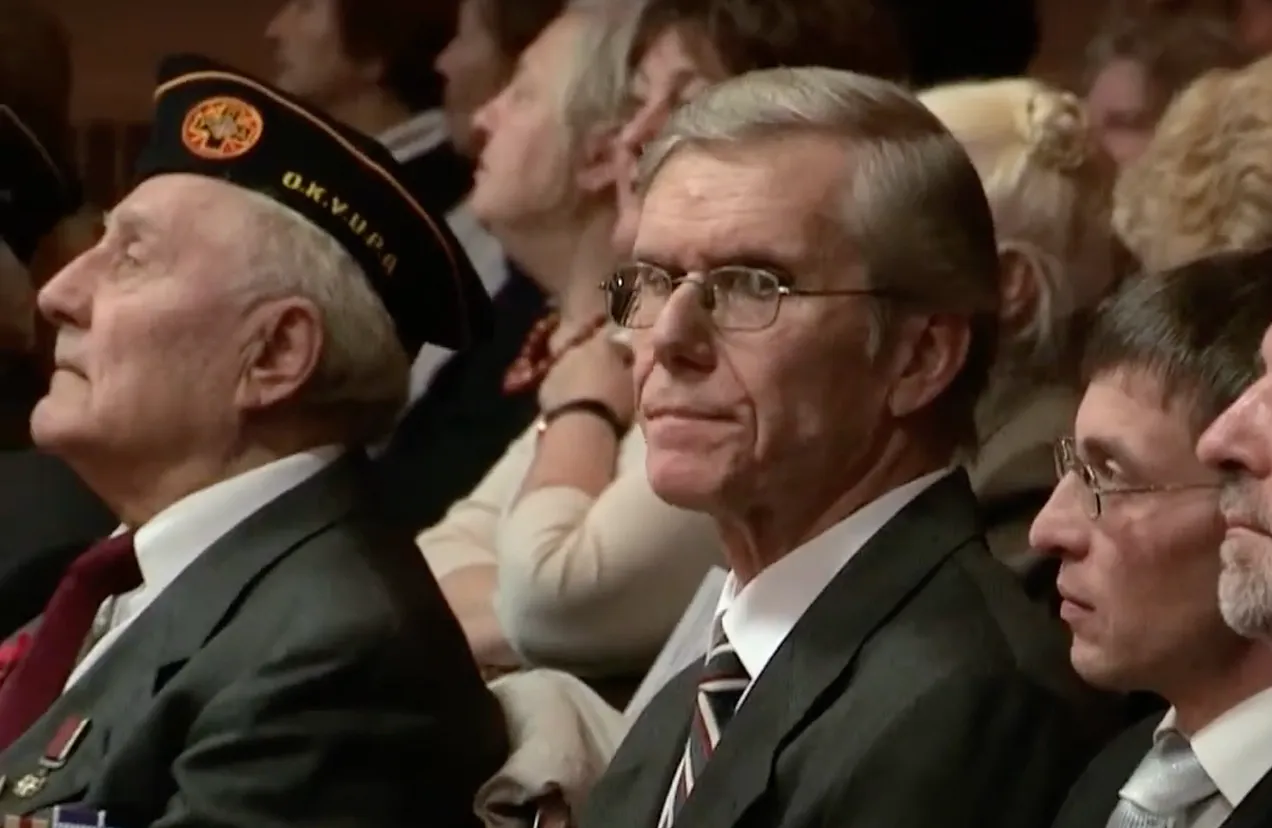
From left to right: Peter Potichnyj, CIA-affiliated UPA veteran; Orest Steciw, Canadian Banderite leader; and Ruslan Zabily, former TsDVR director—at a Canadian celebration of the fake 70th anniversary of UPA (2012)
In 2014, Dmtryo Shtohryn’s chairmanship of the UIUC Ukrainian Research Program ended and it was replaced with a Ukrainian Studies Program. Meanwhile, OUN-B member Serhiy Kvit, an enthusiast of the fascist ideologue Dontsov, had replaced Dmytro Tabachnyk as the Education Minister. Five years later, as the president of the National University of Kyiv-Mohyla Academy (NaUKMA), Kvit mourned the death of Shtohryn, “the librarian of the Ukrainian movement” and an “honored member of the Organization of Ukrainian Nationalists.”
The polemical context of Prof. Shtohryn’s annual conferences, ongoing lively discussions and exchanges of thoughts and ideas were vitally important for Ukrainian intellectual life. The meetings focused on different topics: the participants discussed the future of Ukraine and the Ukrainian diaspora, presented the results of sociological research, discussed various issues of Ukrainian academic and political life, as well as topics of history, literature, the arts and economy. At one of these conferences, Viacheslav Briukhovetsky presented his project to revive the Kyiv Mohyla Academy, which was later successfully implemented and today is the National University of Kyiv Mohyla Academy.
Serhiy Kvit said they first met in 1995, when he studied at the Ukrainian Free University in Munich, and Shtohryn lectured there. According to Kvit, “We immediately began to communicate not only as a student and professor, but also as people who want to change something in this life. In particular, we collaborated on the journal Ukrainian Problems (1991-2003), founded by the late Zinoviy Krasivsky. To support the journal, Prof. Shtohryn engaged Ukrainian scholars from the United States and Canada. In parallel, Prof. Shtohryn co-founded the Center for Liberation Movement Studies headed by Volodymyr Viatrovych.”
Krasivsky was the OUN-B “Land Leader in Ukraine” at the time of independence, who co-founded the far-right nationalist party “State Independence of Ukraine.” In the 1990s, Kvit joined the paramilitary organization “Tryzub” named after Stepan Bandera, which the OUN-B established. According to the Ukrainian media outlet Zaborona, “Since its inception, ‘Tryzub’ activities have been closely linked with the Security Service of Ukraine and specifically with its future head Valentyn Nalyvaichenko.” The OUN-B’s break-up with Tryzub might have been a precondition for turning over a new leaf in Washington at the turn of the 21st century. Ex-Prolog associate Taras Kuzio (from England, which he described as an “OUN-B stronghold”) even wrote a pair of letters to the editor of New Jersey’s Ukrainian Weekly newspaper in 2001, seeking clarity about the OUN-B’s relationship with Tryzub.
In the spring of 2019, about four months before Shtohryn died, the Maidan Museum in Kyiv hosted the first TsDVR congress since December 2013. Volodymyr Viatrovych and Serhiy Kvit joined Ivan Patrilyak, the Banderite dean of history at the Taras Shevchenko National University in Kyiv, to make “guest” speeches. The alleged “Land Leader in Ukraine” read some words from OUN-B’s international chairman Stefan Romaniw in Australia. Steve Bandera, the Canadian grandson of you-know-who, brought greetings from their friends at the Ucrainica Research Institute in Toronto, another OUN-B front, which is a co-owner of the Banderite headquarters in Kyiv.
Reports summarized the work of the OUN-B memory warriors since the “Revolution of Dignity,” such as Andriy Kohut, who remains the director of the SBU archive almost five years later. On February 24, 2022, Kohut lectured students at the University of Illinois Chicago on memory politics in Ukraine. “The fact that Putin mentioned decommunization in his speech before the invasion confirms that Russia is very afraid and tries to avoid the path of rethinking the Soviet past that Ukraine has chosen,” Kohut later told the U.S.-funded Radio Svoboda.
Last year, Lubomyr Luciuk, the Canadian co-editor of Enemy Archives, and a professor at the Royal Military College of Canada, said at a New York City conference organized by the Banderites that Russia’s invasion of Ukraine gave them “the best chance ever to tell our story … so now is the time for us to win the memory war.” His co-editor’s wife recently complained that the American Library Association retracted its award for their book after “one article by a pro-Russian author.” Around that time, Luciuk gave an interview to promote his book, and said that Stepan Bandera’s son, Andriy, “got me interested in writing” after they met in Canada.
In April 2024, Ottawa Citizen journalist David Pugliese reported, “American Library Association pulls award for RMC professor’s book” after “a Jewish organization and Holocaust scholars … raised concerns it whitewashes Nazi collaborators in Ukraine.” Pugliese noted that Luciuk’s co-editor, Volodymyr Viatrovych, “shared a social media response in which a Ukrainian pointed out that [Lev] Golinkin is a Jew and a parasite. That same account also accused another Ukrainian Jew, who has spoken out about the history of Nazi collaborators, of being a parasite.” Pugliese was referring to posts by Daria Hirna, who doesn’t appear to be an OUN-B member, but is a former TV presenter that became the new director of the OUN-B’s Center for Research of the Liberation Movement in December 2021.
Chris Alexander, the Conservative politician who recently smeared Pugliese as a Soviet/Russian agent and claimed to substantiate his accusations with Ukrainian KGB documents, might have had some help from the editor(s) of Enemy Archives. Last year, Alexander promoted a National Post op-ed from Lubomyr Luciuk, which was really an excerpt from his new book with Viatrovych. Luciuk emphasized that before invading Ukraine, Vladimir Putin “specifically referred to Banderivtsi, members of the Organization of Ukrainian Nationalists (OUN) headed by Stepan Bandera,” and says that “we certainly did not anticipate this … being deployed as an excuse for starting a large-scale war in 21st-century Europe.”
The Centre for Strategic Communication and Information Security, a Ukrainian government organization established by the Ministry of Culture and Information Policy, weighed in on the ALA scandal two days before Pugliese’s article: “How Academic Freedom and Ukrainian History are under attack, on the example of one dirty campaign.” This government organization blamed that “part of the Western academic environment, which consistently promotes the thesis about ‘Ukrainian Nazism’.” According to this “leading channel of government communication about the war in Ukraine,”
In reality, there are no testimonies and documentary evidence that would confirm the cooperation of the Organization of Ukrainian Nationalists (OUN) with the Nazis in the mass murder of Jews. … There is also no confirmation of the words that the Ukrainian Insurgent Army as an organized force participated in the murder of Jews. … Unfortunately, the KGB special operations gave results, and now the history of the Ukrainian national liberation movement became one of the most mythologized pages of the Ukrainian history.
The Centre for Strategic Communication also took aim at Ukrainian Jewish leader Eduard Dolinsky, who I’m guessing is the other person that Daria Hirna called a “parasite.”
Special attention should be paid to Golinkin’s references to Eduard Dolynskyi, who presents himself as the head of the “Ukrainian Jewish Committee”, but does not really represent the Jewish community of Ukraine. Instead, he is well known for spreading fakes about the growth of antisemitism in Ukraine and the glorification of Nazism.
I agree that “part of the Western academic environment” deserves more blame for the memory war, as a result of which the history of World War II “became one of the most mythologized pages of Ukrainian history,” and far-right nationalists are increasingly empowered as Ukraine’s thought police.
https://banderalobby.substack.com/p/sad ... memory-war
******
"Ukraine wants to make peace"
December 8, 12:00

Trump called for an immediate ceasefire in Ukraine and the start of peace talks.
According to Trump's statement, Ukraine is eager to make peace with Russia.
Ukrainian media report that Trump's entourage demanded that the cocaine Fuhrer rescind his decree banning negotiations with Russia.
The conditions under discussion revolve around a worsened version of the Istanbul agreements for Ukraine.
1. Minus 4 regions (there were 2) - the question of Kherson and Zaporozhye is up in the air.
2. Ukraine's refusal to join NATO (the Russian Federation demands a complete refusal, the US offers to postpone it for 10-20 years)
3. Some security guarantees from the West and Russia
4. An exchange of prisoners of war for all. The return of the dead.
5. Denazification (???)
6. Demilitarization (a ban on the deployment of foreign military bases, a reduction in the army and strike weapons, military exercises only with the consent of Russia)
And so on.
Russia is not satisfied with a simple freeze along the front line.
https://colonelcassad.livejournal.com/9539970.html
Terrorist attack in Donetsk. 09.12.2024
December 9, 11:25
As a result of the terrorist attack in Donetsk, the former head of the colony in Elenovka, Vitaly Yevsyukov, was killed.
An explosive device went off under the bottom of his SUV. Yevsyukov died, his wife's leg was torn off, she is now in hospital.
The Yelenovskaya colony became widely known for the fact that in 2022, as a result of shelling of the colony from the HIMARS MLRS, about 50 Azov militants were killed there, who were captured in Mariupol and some of them started to inject drugs. Which actually prompted the Nazis to eliminate the witnesses. Well, and then the blame for the shelling was put on Russia, as if it was shelling itself. (Video at link.)
https://colonelcassad.livejournal.com/9541179.html
Google Translator
******
On NATO training in the Black Sea
December 8, 2024
Rybar
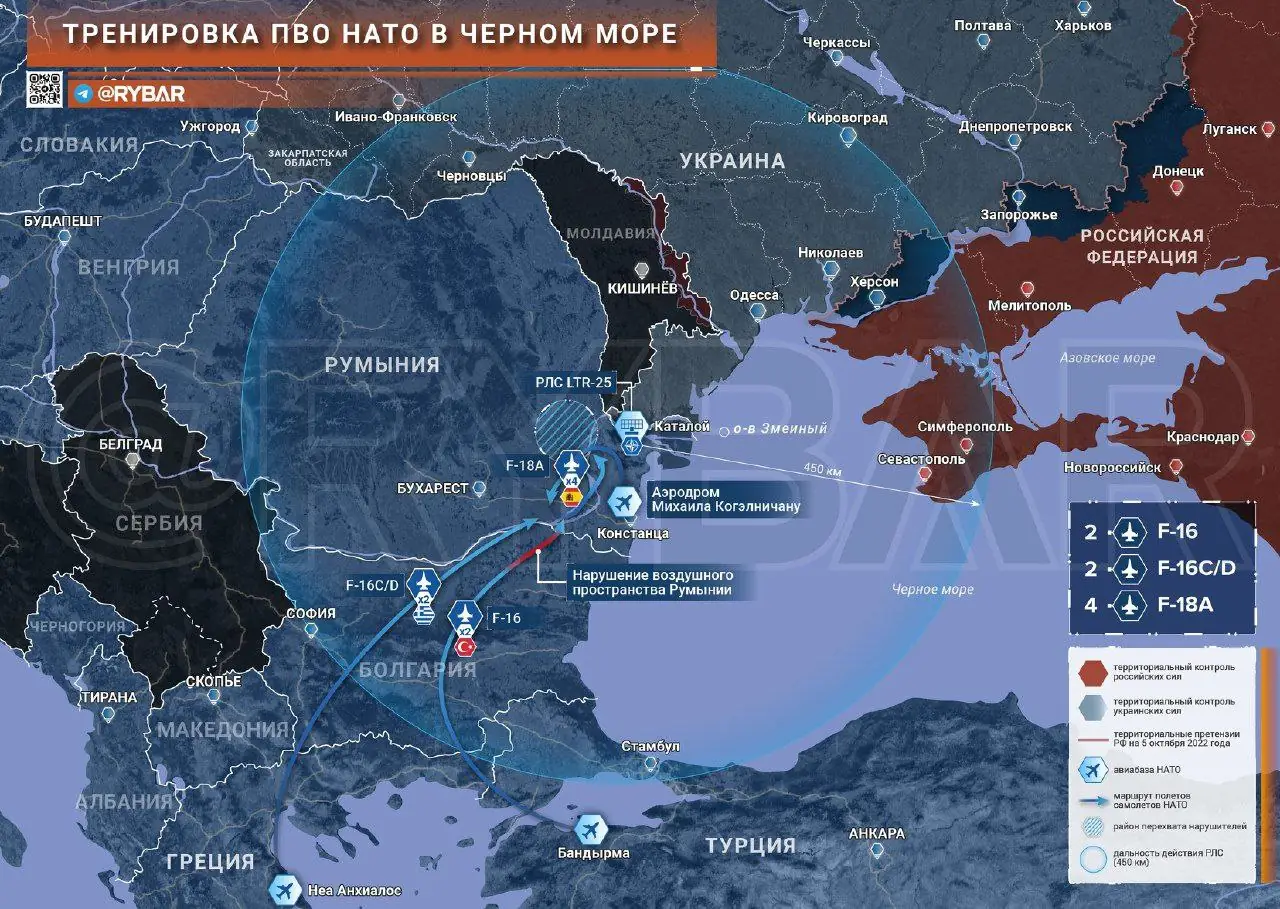
While the world community's attention is focused on Syria , the North Atlantic Alliance continued activities for its air defense systems. A training exercise on protecting airspace from enemy strikes — Russia — was held over Romania.
The Russian Aerospace Forces' actions were imitated by Turkish F-16C/Ds, which were pretending to strike Romanian air bases and penetrate their airspace. They were countered by Spanish and Greek fighters.
Detection and guidance were carried out by the LTR-25 radar installed in Romania several months ago . This is a station for identifying air targets, which in range reaches the Crimean Peninsula .
Turkish planes specially flew into the western part of the Black Sea , pretending to attack from the Crimean side.
NATO needs such training to study the capabilities of its own defense systems and to keep pilots in good shape while operating in various anti-Russian missions.
But, in addition to this, under the pretext of training, NATO is studying the reaction of our air defense and aviation units. The LTR-25 radar, as well as the onboard equipment of the aircraft, were working at full capacity, assessing our forces in Crimea.
https://rybar.ru/o-natovskoj-trenirovke-v-chernom-more/
Google Translator
******
Russia Matters: Trump Team’s Ukraine Peace Plan: Territorial Concessions, No NATO Membership
December 8, 2024
Russia Matters, 12/6/24
5 Things to Know
Advisers to Donald Trump are floating proposals to end the Ukraine war that would cede large parts of the country to Russia for the foreseeable future and take NATO membership for Ukraine off the table, according to a Reuters analysis of statements and interviews with several people close to the U.S. president-elect, including his incoming Russia-Ukraine envoy Keith Kellogg. Meanwhile, Volodymyr Zelenskyy has said Ukraine must find diplomatic solutions to regaining occupied territories and suggested he may be open to negotiations by sending his chief of staff Andrei Yermak to Washington to meet with members of Trump’s team such as JD Vance, Mike Waltz and a representative for Kellogg. While Yermak has so far made no public comments on the outcome of these meetings, Ukraine’s foreign minister repeated his government’s stance that Kyiv would reject any security guarantees other than NATO membership. Just as Ukraine’s territorial losses and manpower shortages may make Zelenskyy more amenable to negotiating a deal with Putin, the latter’s knowledge of these losses and shortages may make him less willing to pursue such a deal for as long as his forces keep capturing land in Ukraine and retaking land in Russia’s Kursk region. It is also difficult to imagine how any mediator of talks between Ukraine and Russia can accommodate Ukraine’s demands for NATO membership given the persistent opposition of some of the alliance’s members, such as Hungary.*
In the past month (Nov. 1–Dec. 4), the Russian forces made a net gain of 354 square miles in Ukraine, which is about the size of the city of Dallas, Texas. This gain includes 95 square miles Russia gained in the past week, which is slightly larger than the size of Boston, Mass., according RM staff’s Dec. 4, 2024, estimate based on data provided for that period by the Institute for the Study of War. ISW itself has calculated that Russia captured 1,042 square miles (2,700 square kilometers) in 2024, about the size of Rhode Island, compared with just 180 square miles (465 square kilometers) last year, according to FT. In the latest developments reported on Dec. 6, the Russian military claimed to have captured the Donetsk region settlements of Sukhi Yaly and Pustynka, with the latter about 30 kilometers away from the embattled supply hub of Pokrovsk and about 35 kilometers away from the industrial town of Kurakhove. Ukrainian military analyst DeepState said Russian troops were less than 7 kilometers from the outskirts of Pokrovsk, which is a major logistics base and transport hub for Ukraine’s armed forces, where multiple roads and rail lines intersect. Given how precarious the situation has become in eastern Ukraine, Zelenskyy announced that he was replacing the commander of Ukraine’s ground forces, appointing Maj. Gen. Mykhailo Drapaty to succeed Lt. Gen. Oleksandr Pavliuk, accordiung to NYT.
The U.S. has pressed Ukraine to lower its military recruitment age to 18 to address a severe shortage of manpower that has weakened its position on the battlefield and led to the fastest Russian gains in two years, according to FT. In addition to casualties, the personnel strength of the Ukrainian armed forces has been diminished by desertions. More Ukrainian soldiers have deserted in the first 10 months of this year than in the previous two years of the war, according to FT. Since 2022, Ukraine has opened nearly 96,000 criminal cases against servicemen who abandoned their positions in what represents a sixfold increase over the past two years, and most of the cases were opened this year, according to Bloomberg.
Gen. Valery Gerasimov, chief of the Russian General Staff, and Gen. Charles Q. Brown Jr., the chairman of the U.S. Joint Chiefs of Staff, have spoken by phone on how to manage escalation concerns between the two countries, defense and military officials told NYT. The rare phone call took place on Nov. 27, just six days after Russia launched a new nuclear-capable MRBM, “Oreshnik,” at Ukraine and nine days before Vladimir Putin said he would heed Belarus’ request to deploy this missile on Belarus’s territory. The past week has seen Putin continue to talk up the Oreshnik, describing its impact as being “comparable in power to that of a nuclear weapon.” In remarks made on Nov. 28, Putin also said Russia will use any means it has at its disposal to prevent the acquisition of nuclear weapons by Ukraine. The Russian Defense Ministry is yet to confirm Gerasimov’s conversation with Brown. Previously, the Kremlin denied reports in the U.S. media that Putin spoke to Donald Trump upon the latter’s victory in the U.S. presidential election.
Three-quarters of Americans (76%) worry Russia might use nuclear weapons in the war in Ukraine, and 70% are concerned about Russia launching a thermonuclear attack against the U.S., up 10 points since 2021, according to the 2024 Reagan National Defense Survey, conducted in November 2024. In contrast, only 39% of Russians think Russia would be definitely or probably justified in using nuclear weapons in this war, while 45% do not find such actions justifiable, according to the Levada Center’s November poll. The gap between nuclear hawks and doves in Russia was wider than in the previous poll: in April 2023, some 29% of Russians said they’d justify the use of nukes in Ukraine, while 56% held the opposite view.
https://natyliesbaldwin.com/2024/12/rus ... embership/



